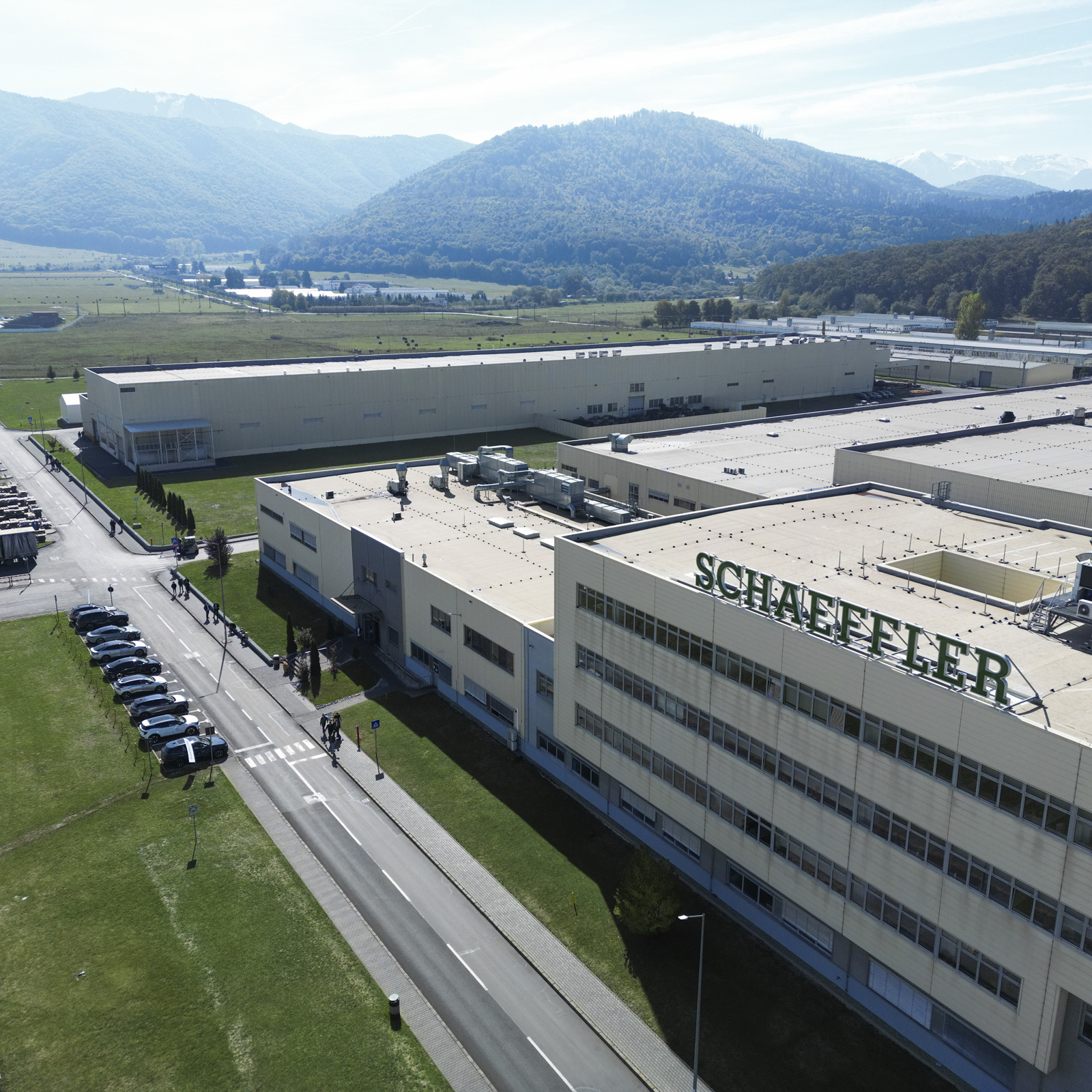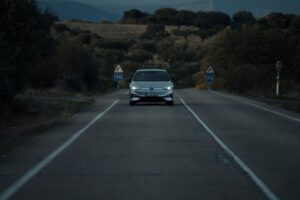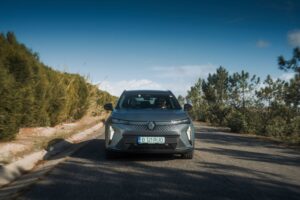Setting off on a tour of Europe from Bucharest to Lisbon and back is in itself a combination of courage and lots and lots of careful planning for what is surely the most complex project in the Romanian automotive press.
There are 20 of us and we’ll be traveling across Europe for 16 days with 8 electric cars to compile real data on fuel consumption, range, running costs and many other useful figures. We’re planning photo sessions in the mountains, as well as stops in strategic locations for the car industry.
Perhaps not coincidentally, the start of #EUROCHARGE took place at the Country Spa Health & Beauty Retreat in Snagov. The truth is, we all needed a secluded, quiet and discreet place to recharge our batteries before the biggest editorial adventure of our lives. And to meet the eight electric cars accompanying us on this tour.
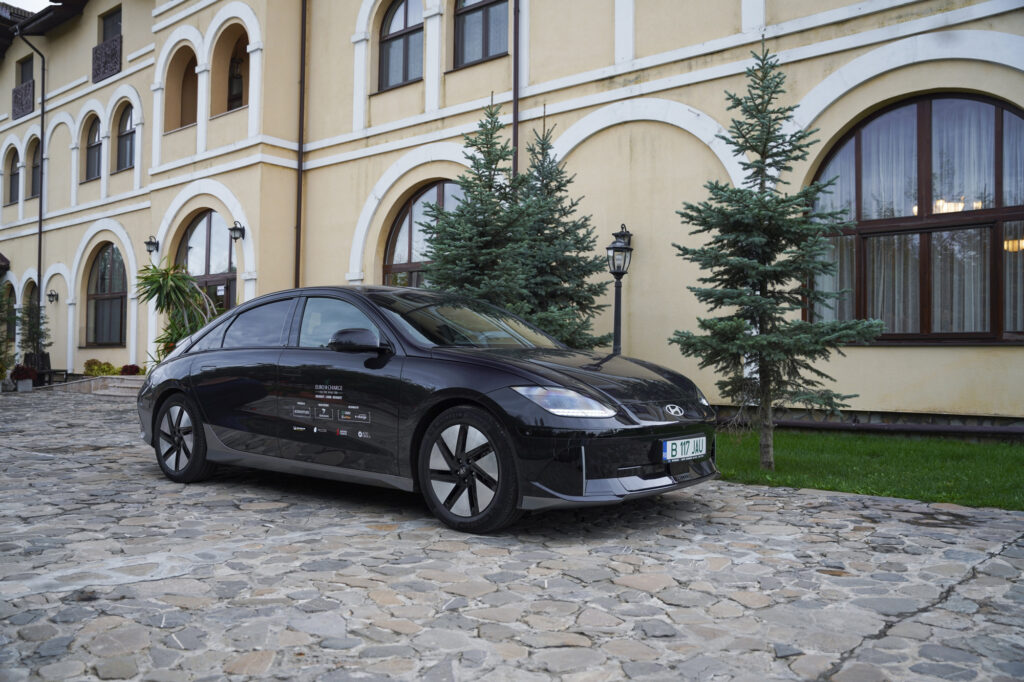
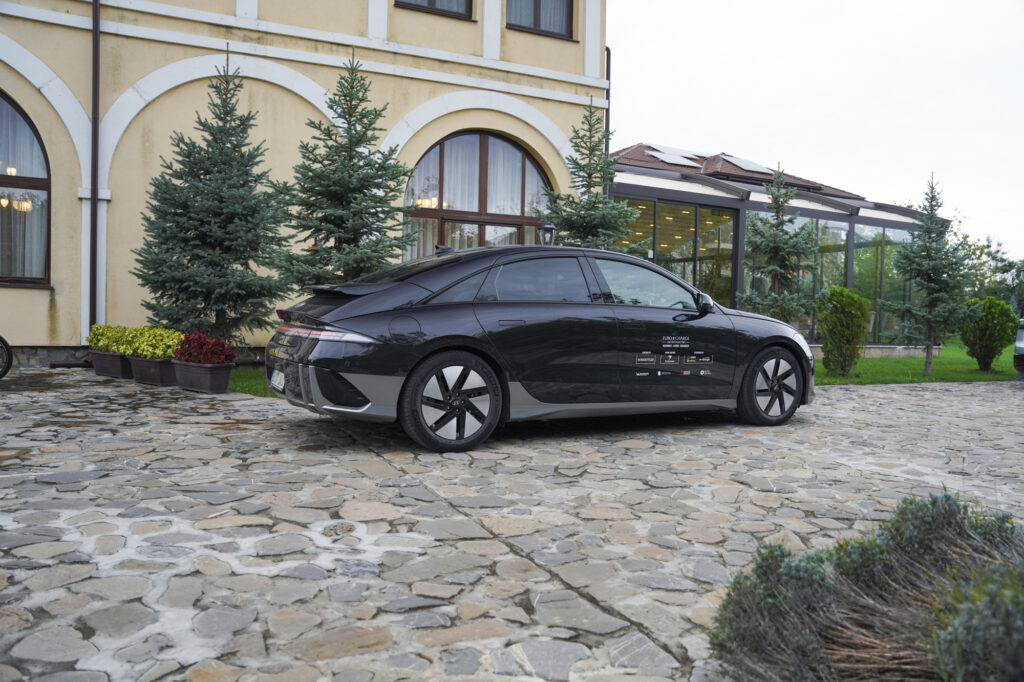
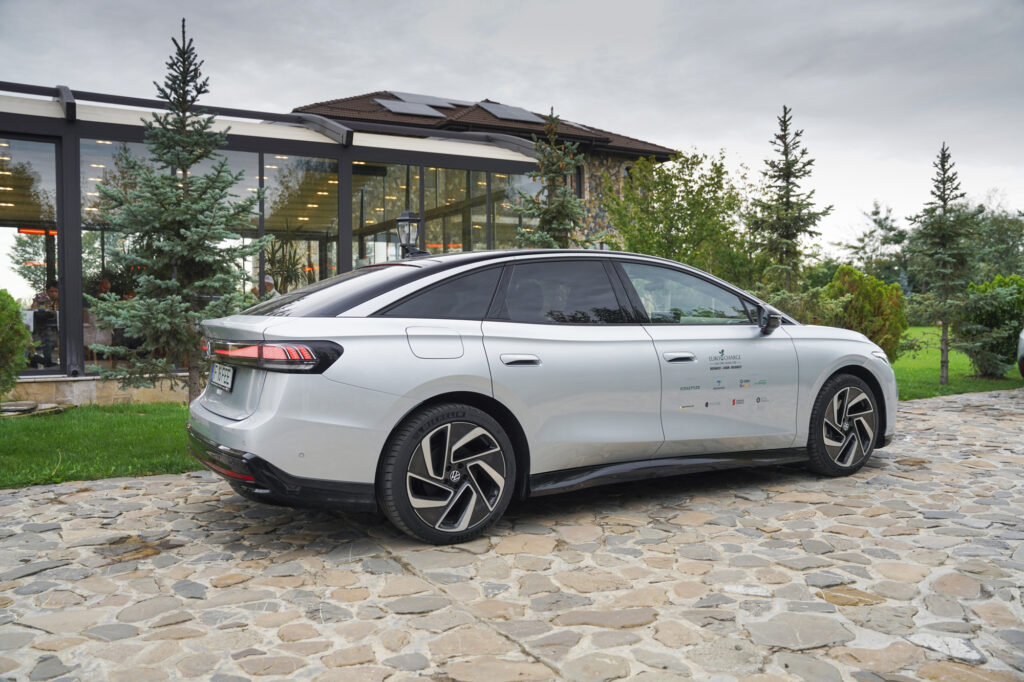
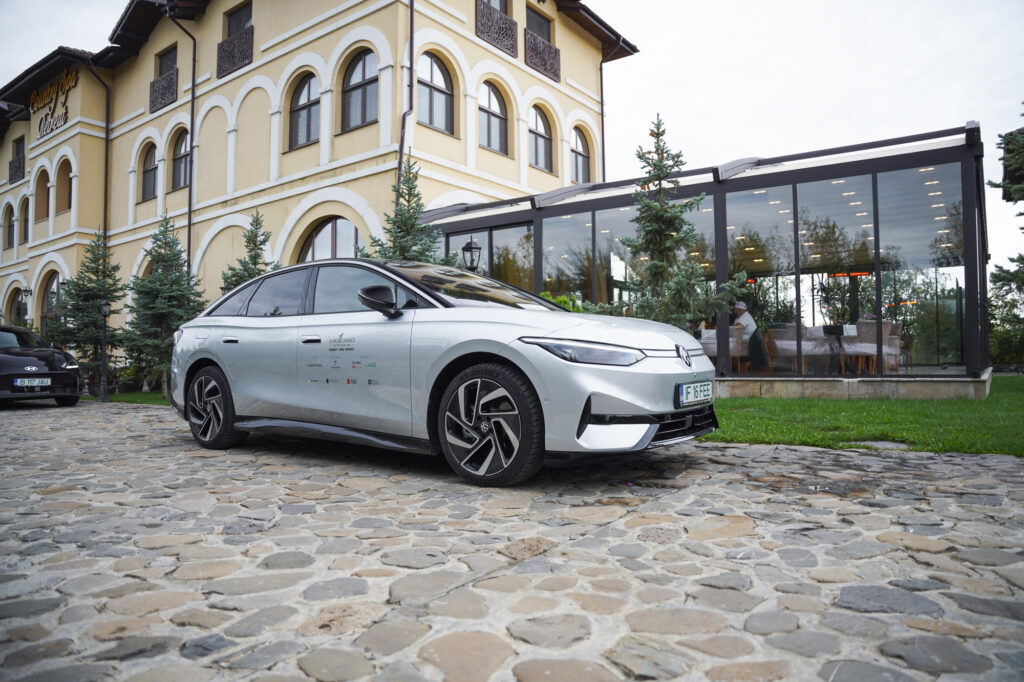
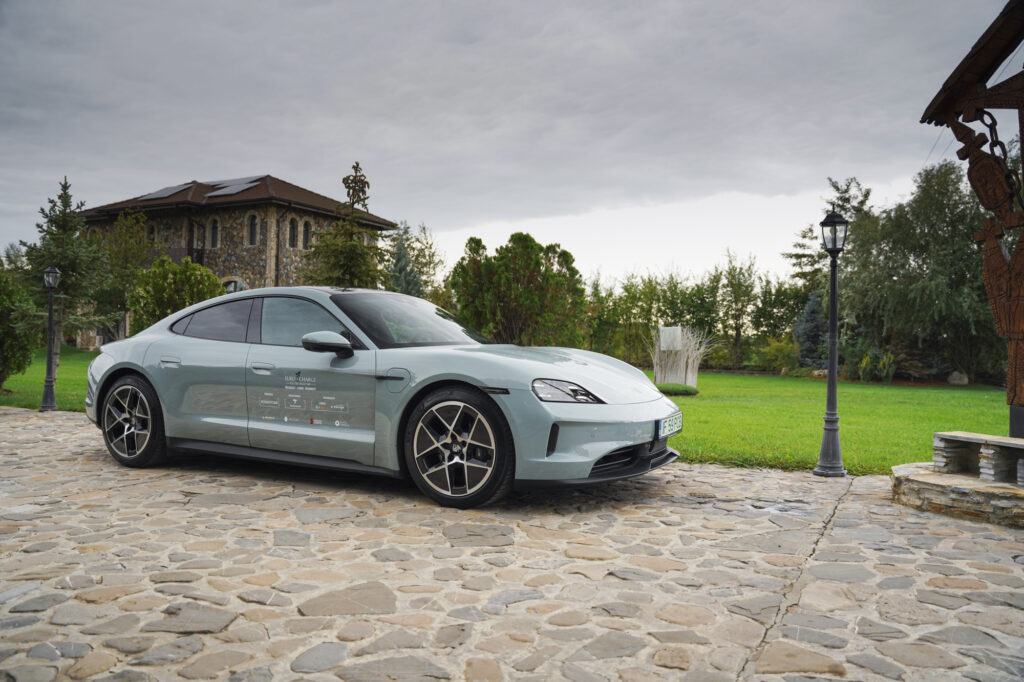
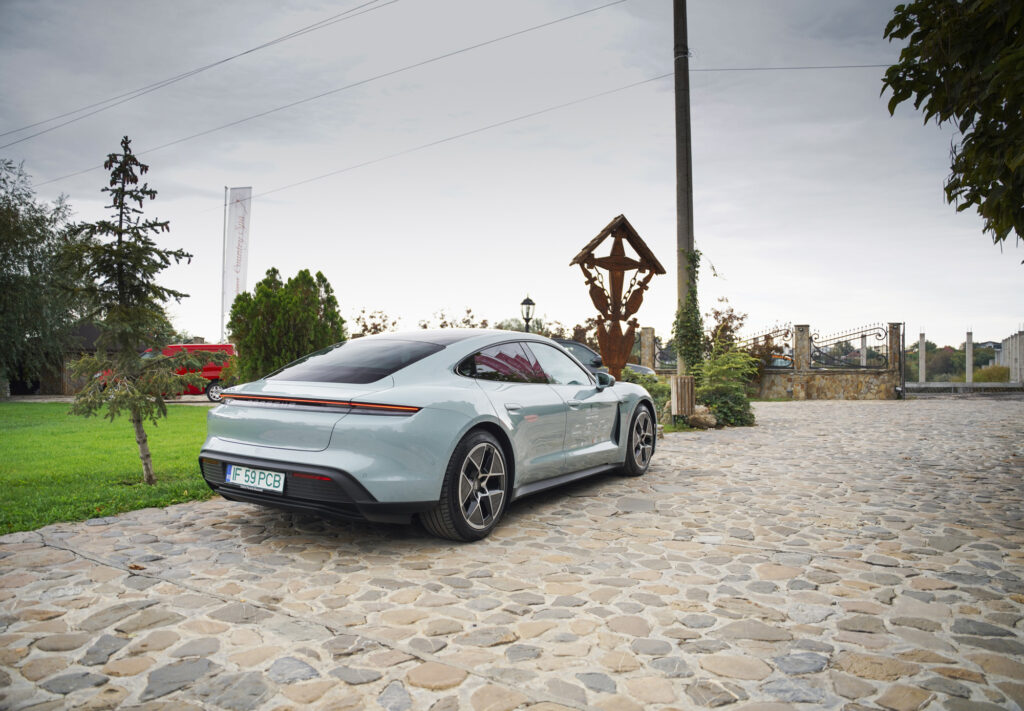
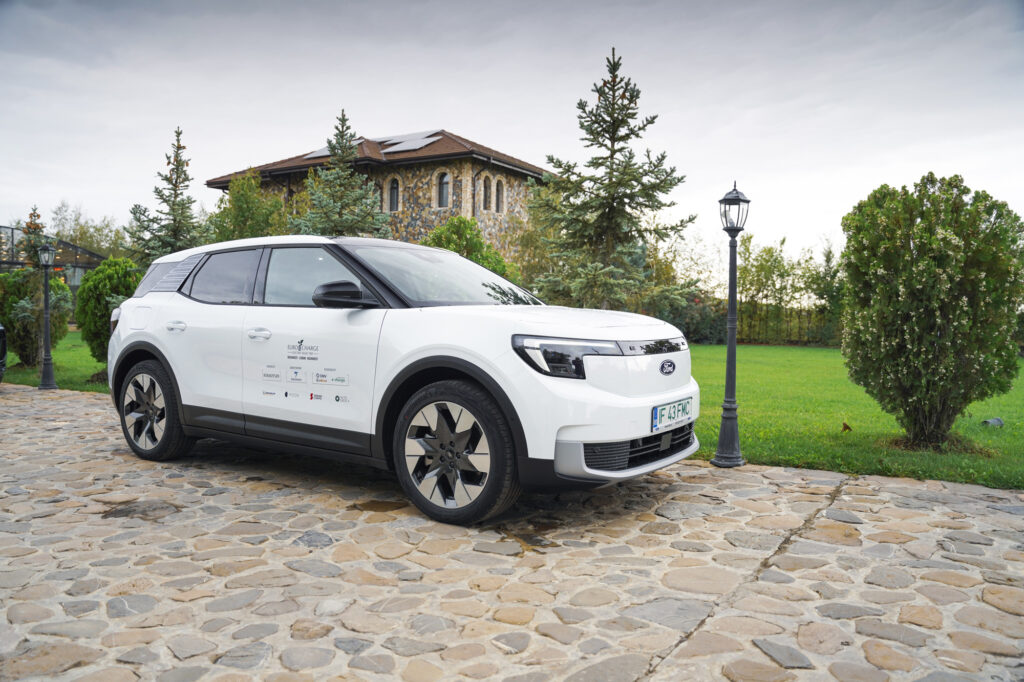
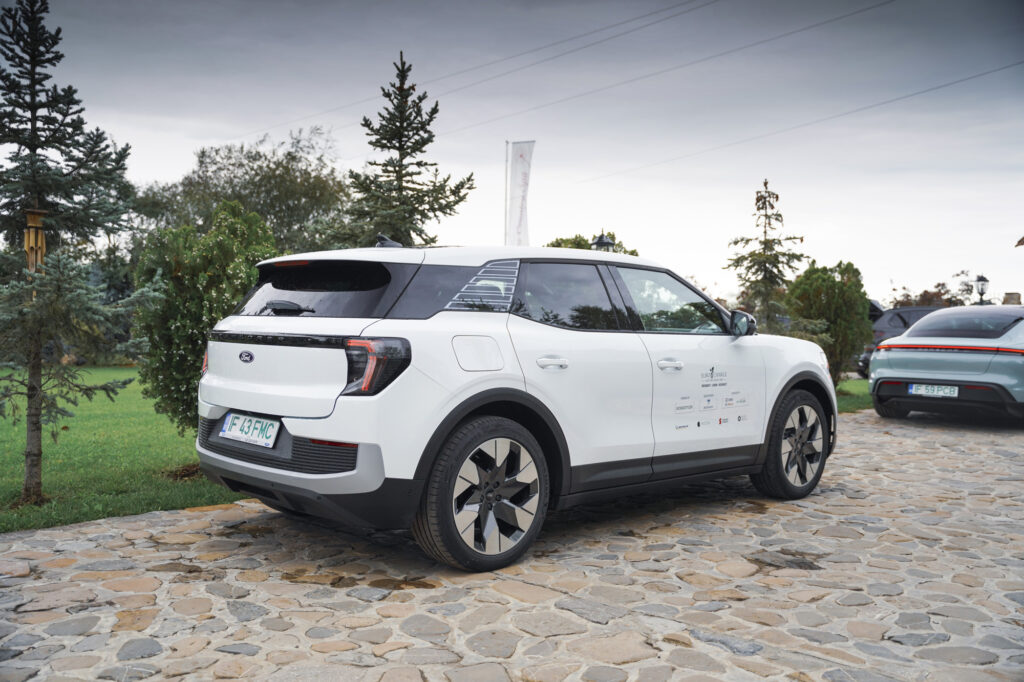
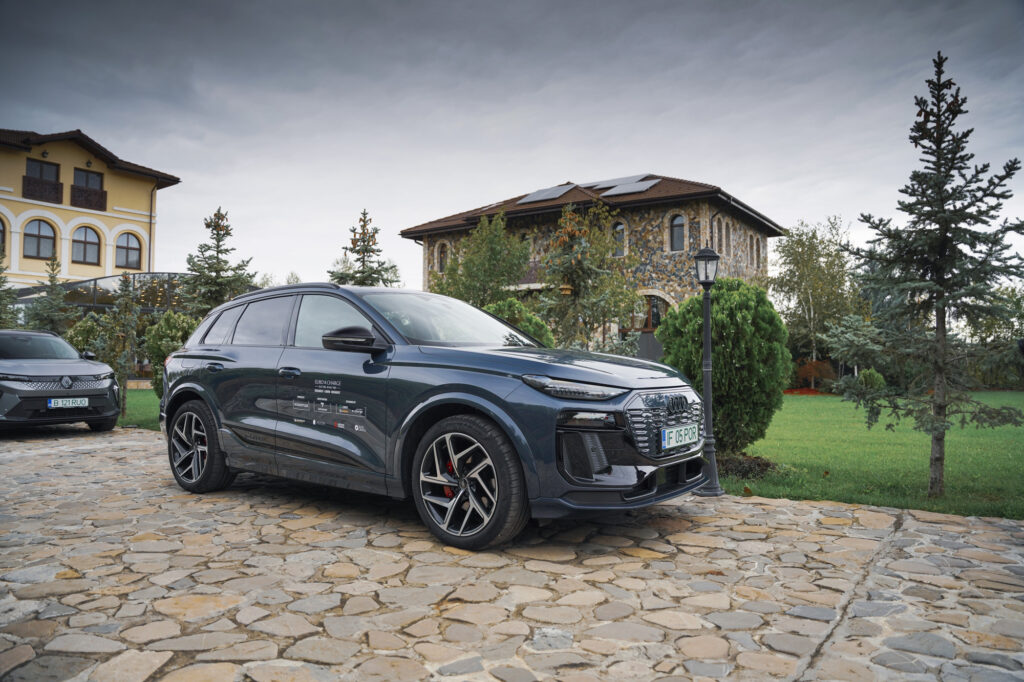

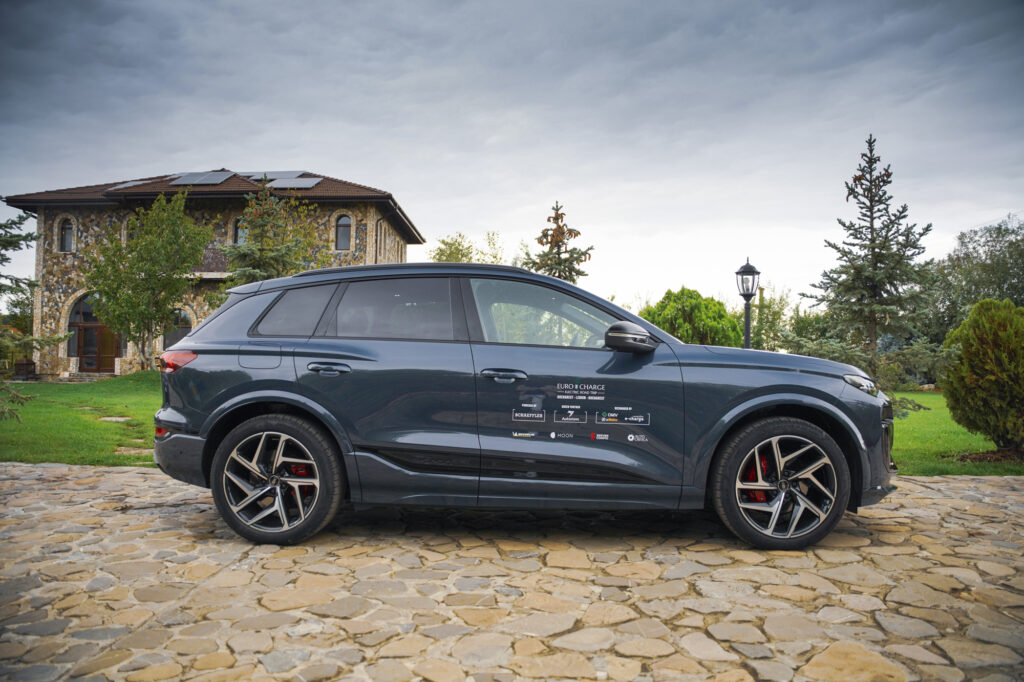
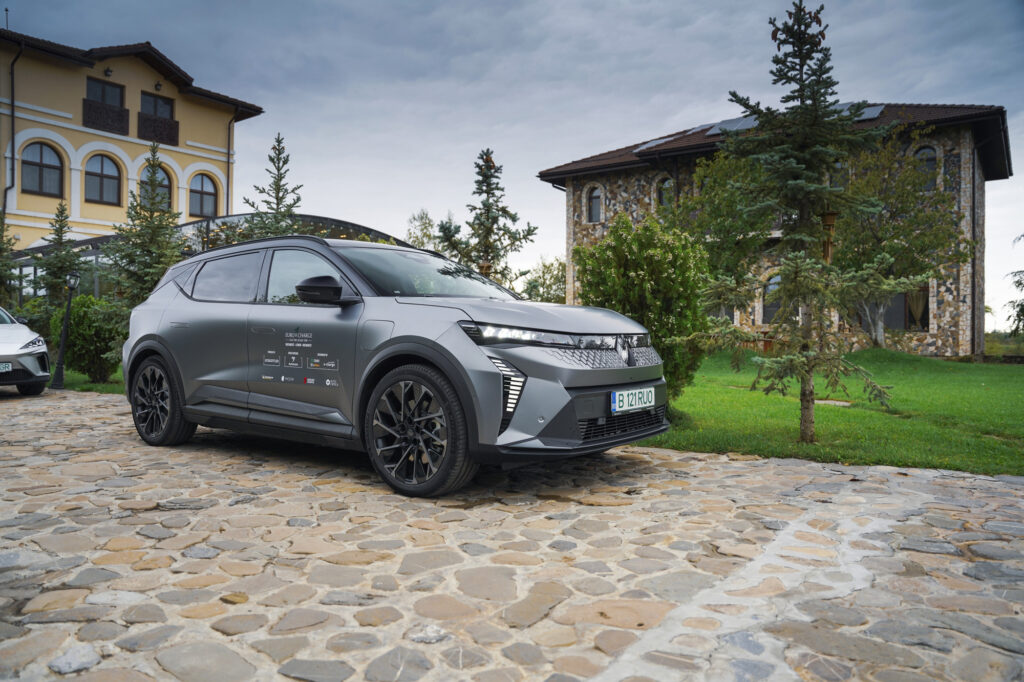
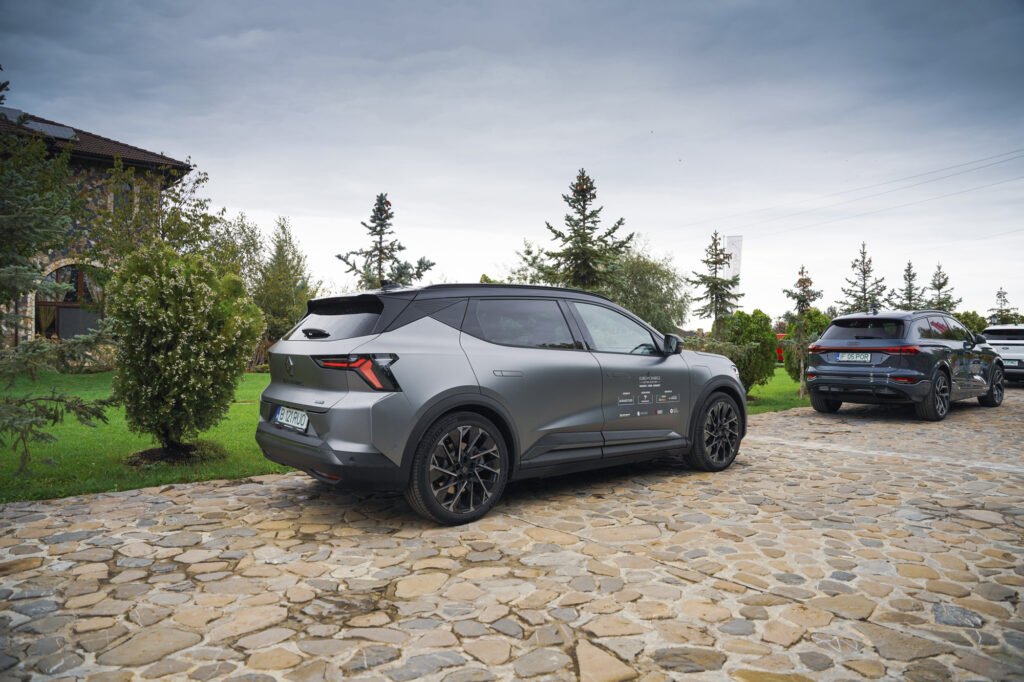
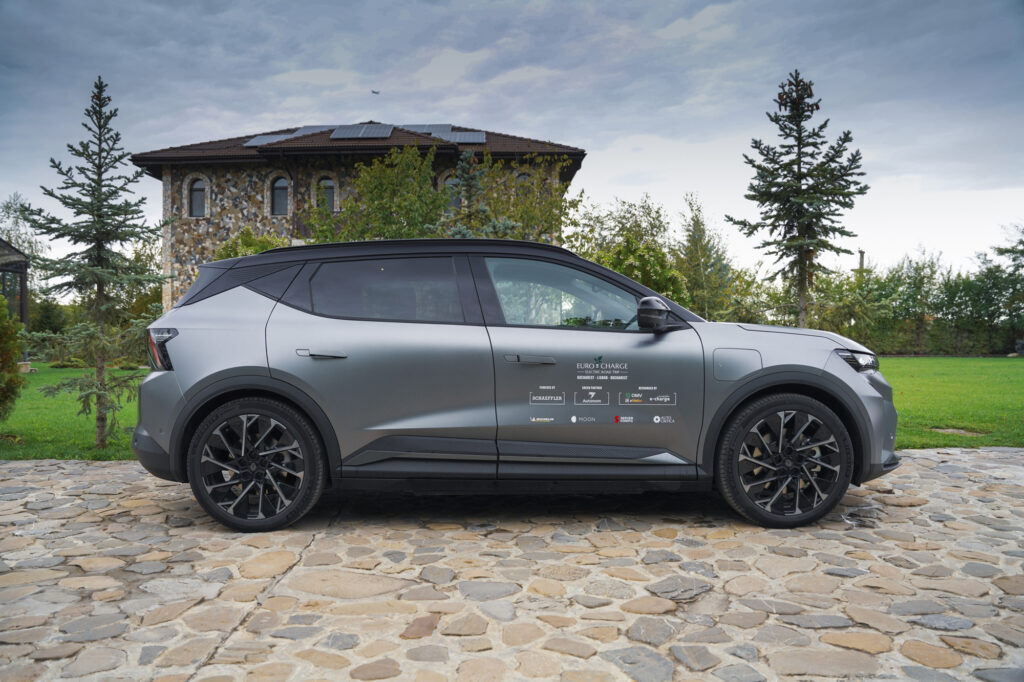
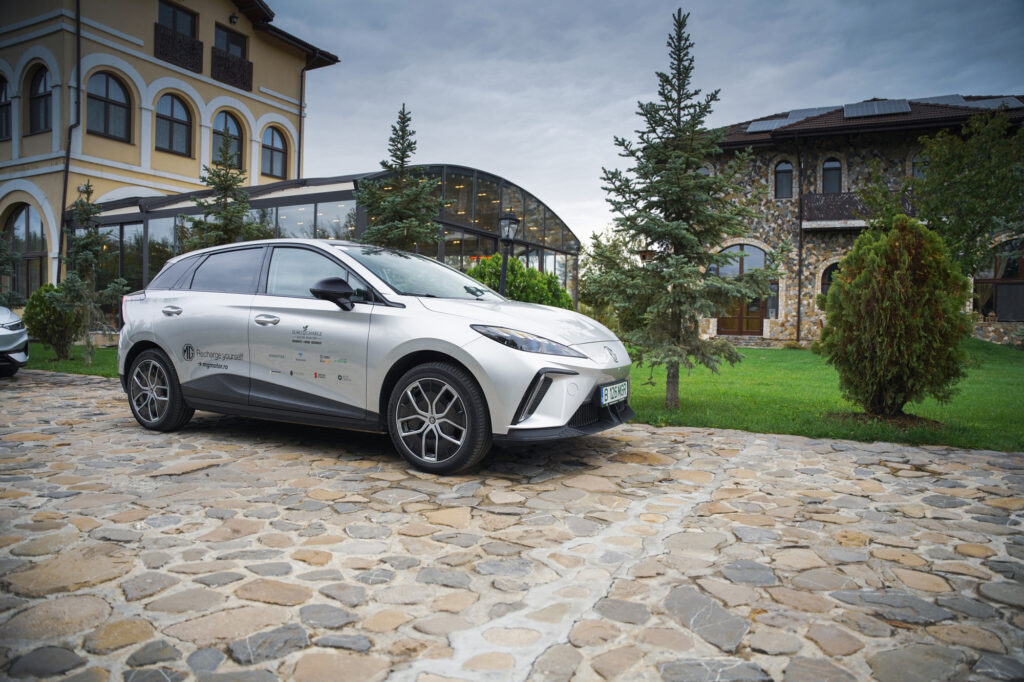

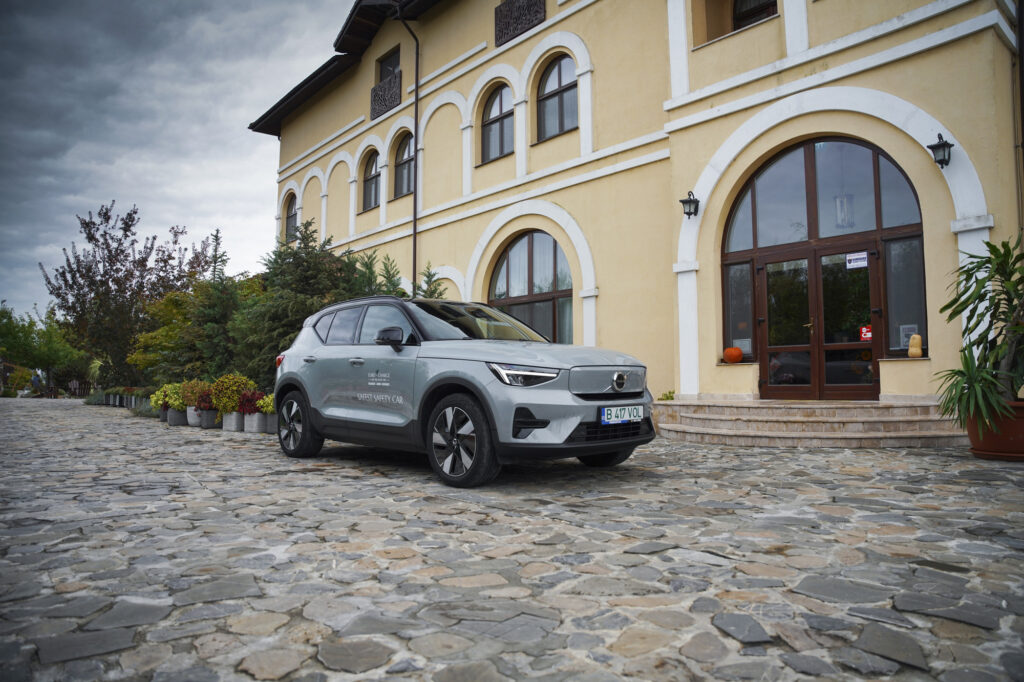
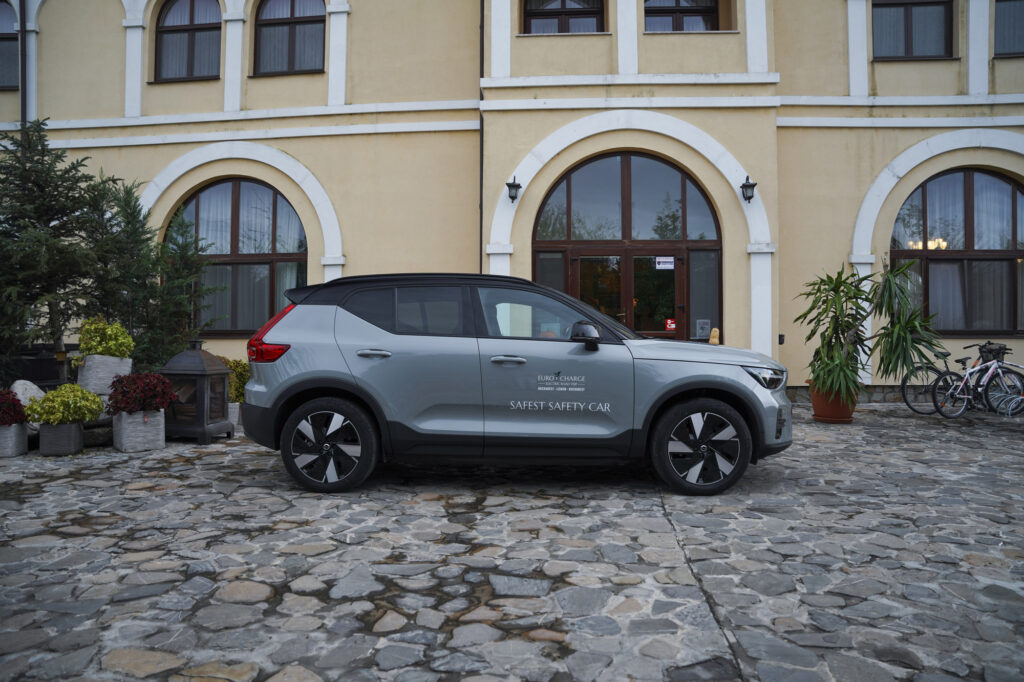
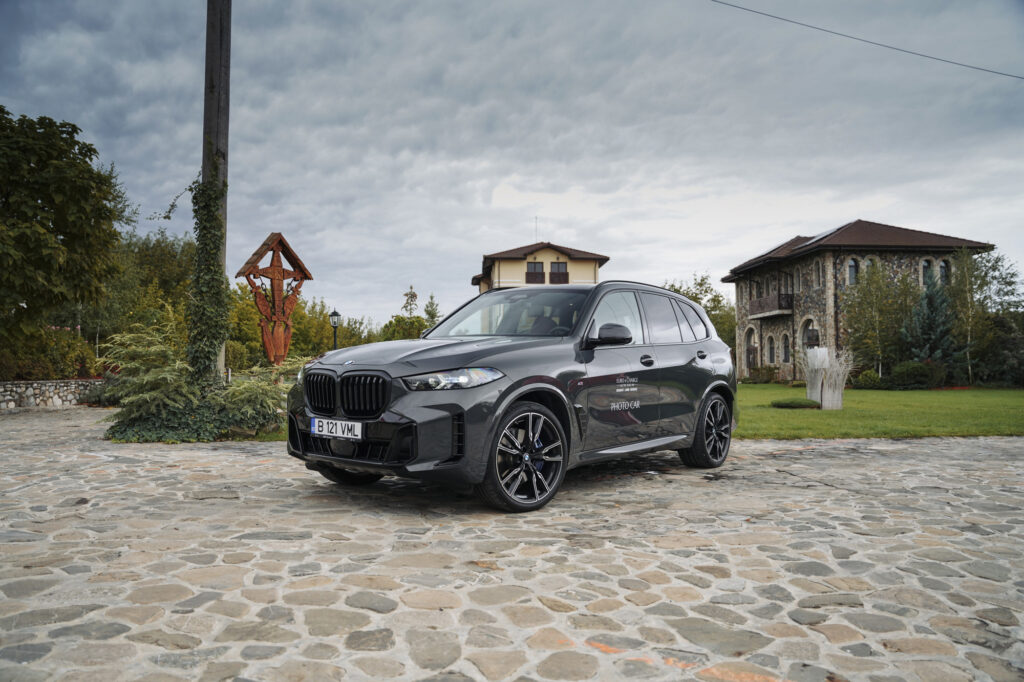

This was followed by lunch at Cantacuzino Castle, which has watched over the resort of Bușteni since 1911, when it was built in stone and brick based on the plans of architect Grigore Cerchez at the request of Prince Gheorghe Grigore Cantacuzino. The castle’s popularity grew exponentially after the first season of the Netflix series Wednesday was filmed here in 2022.
In addition to the history lesson, here at Canta Cuisine, we had a lunch of mushroom soup, duck breast with carrot and orange puree, and dessert of white chocolate lava cake with pistachio and vanilla ice cream.
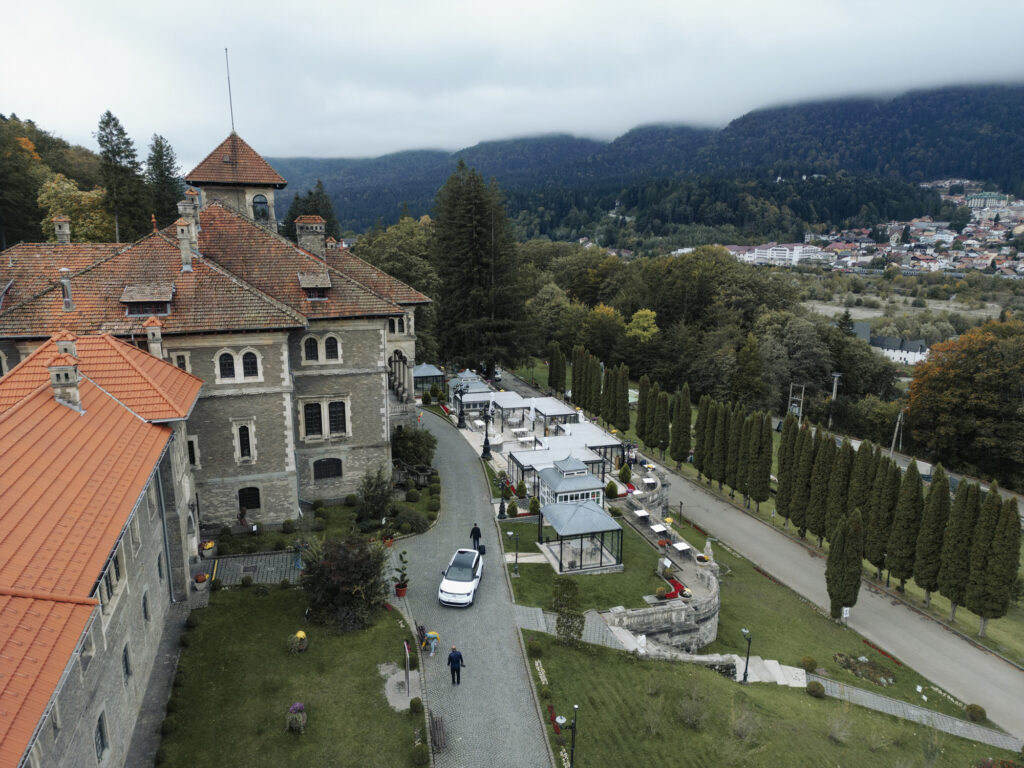

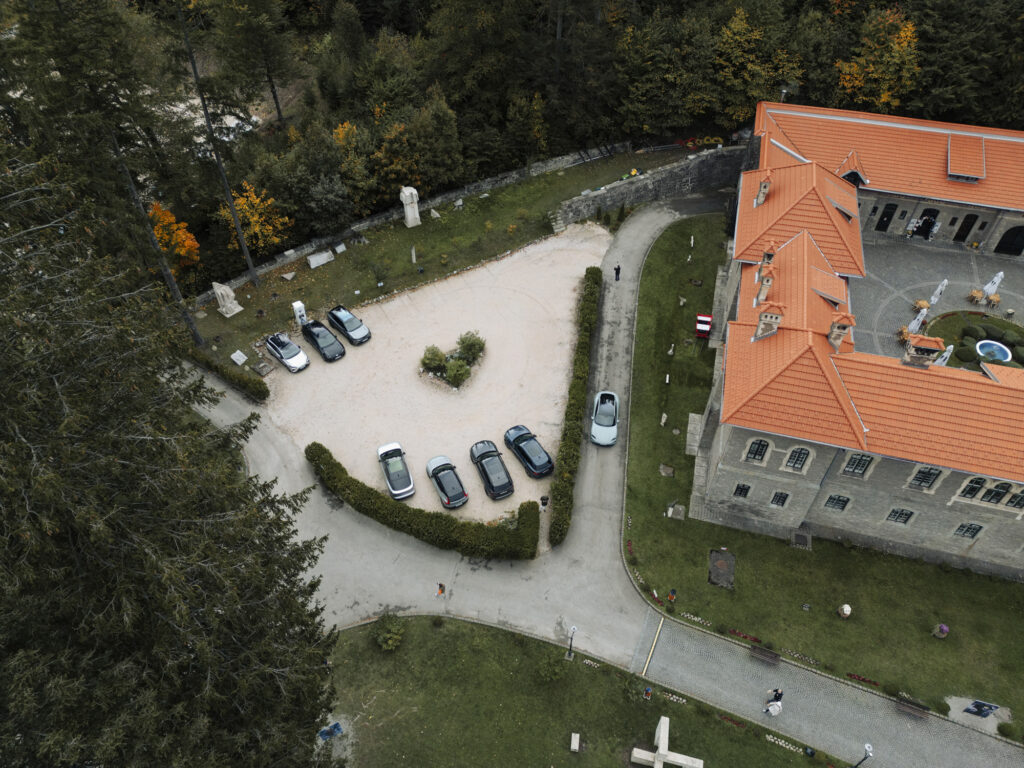
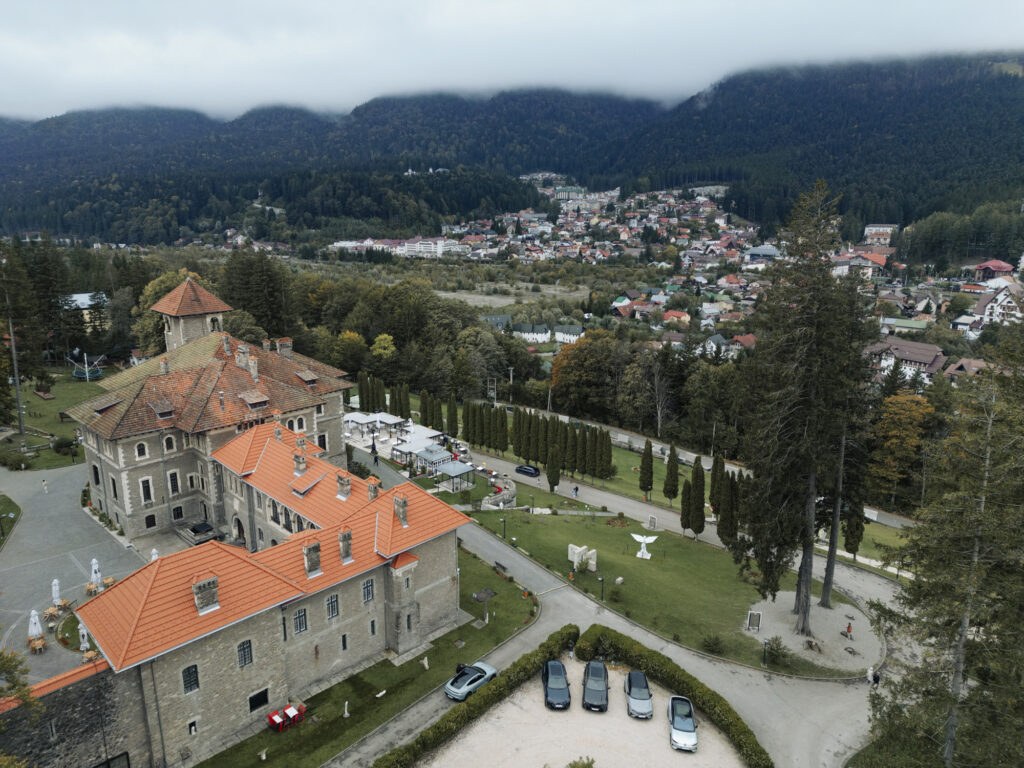
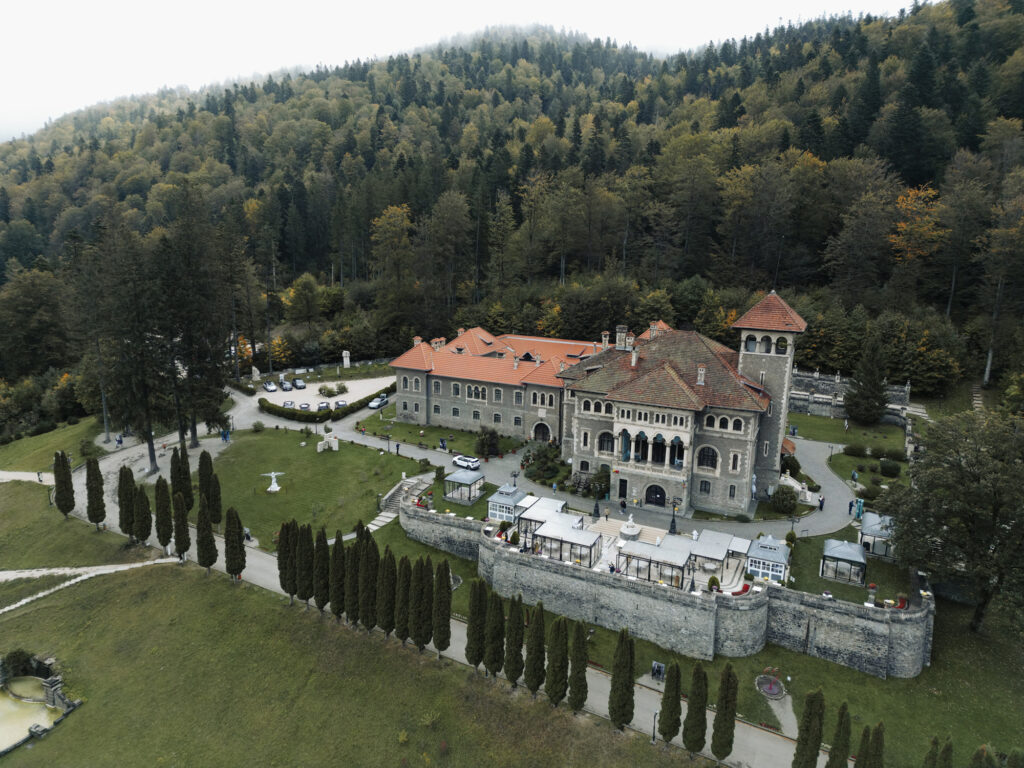
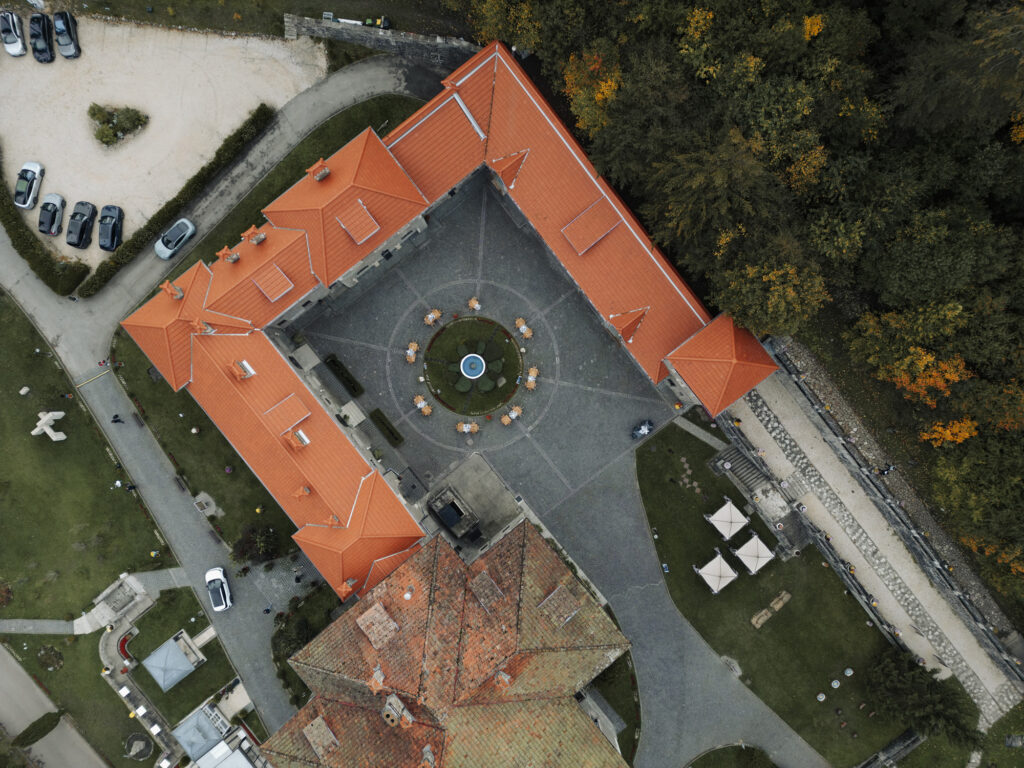
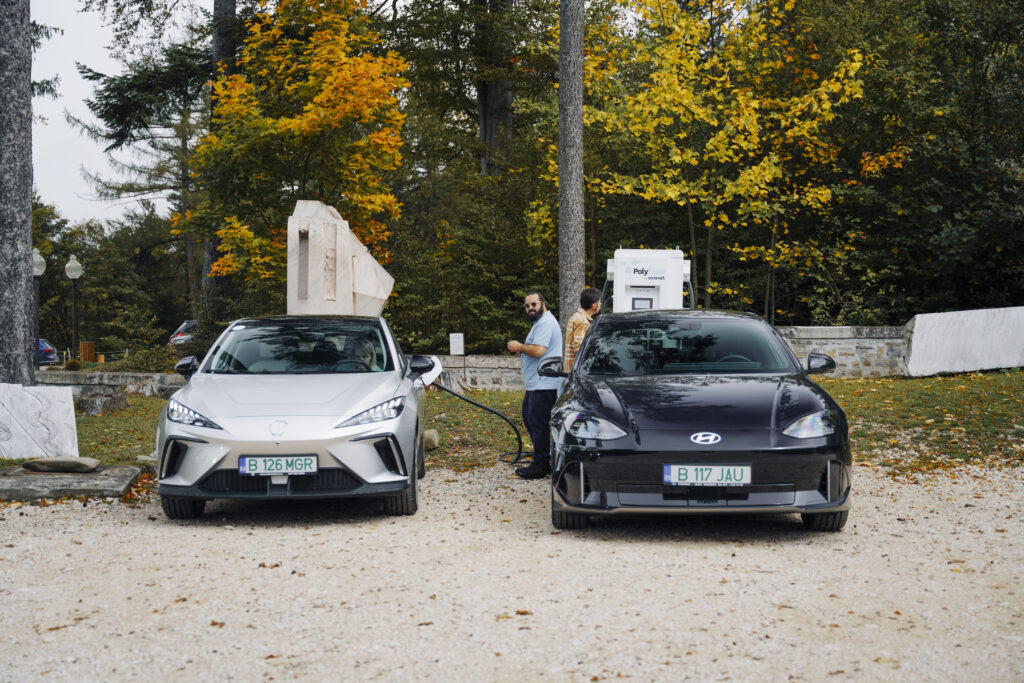

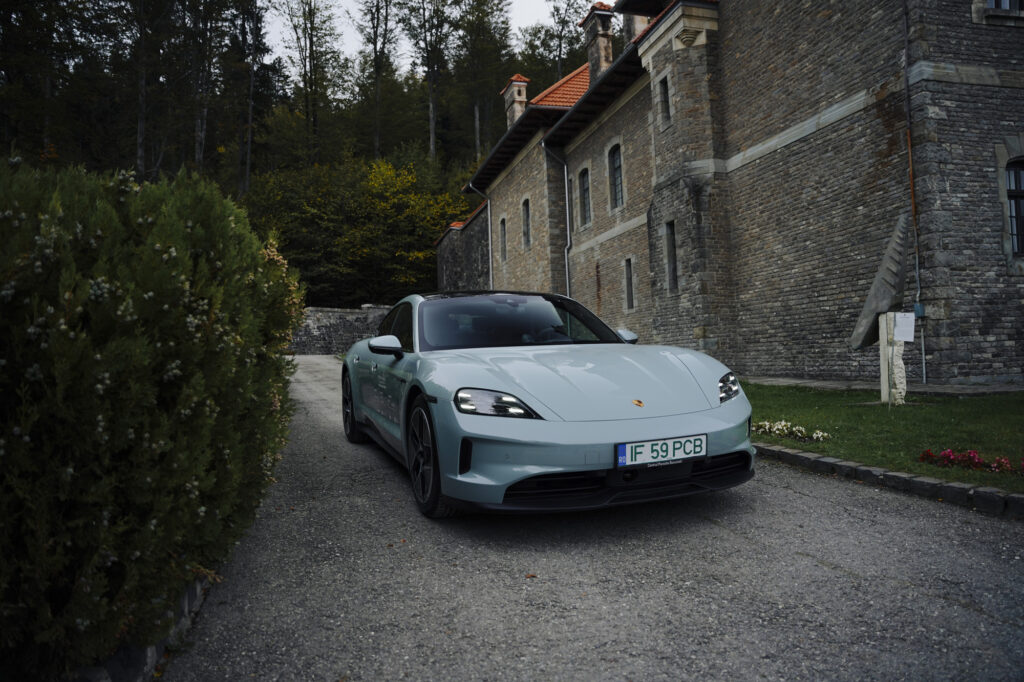

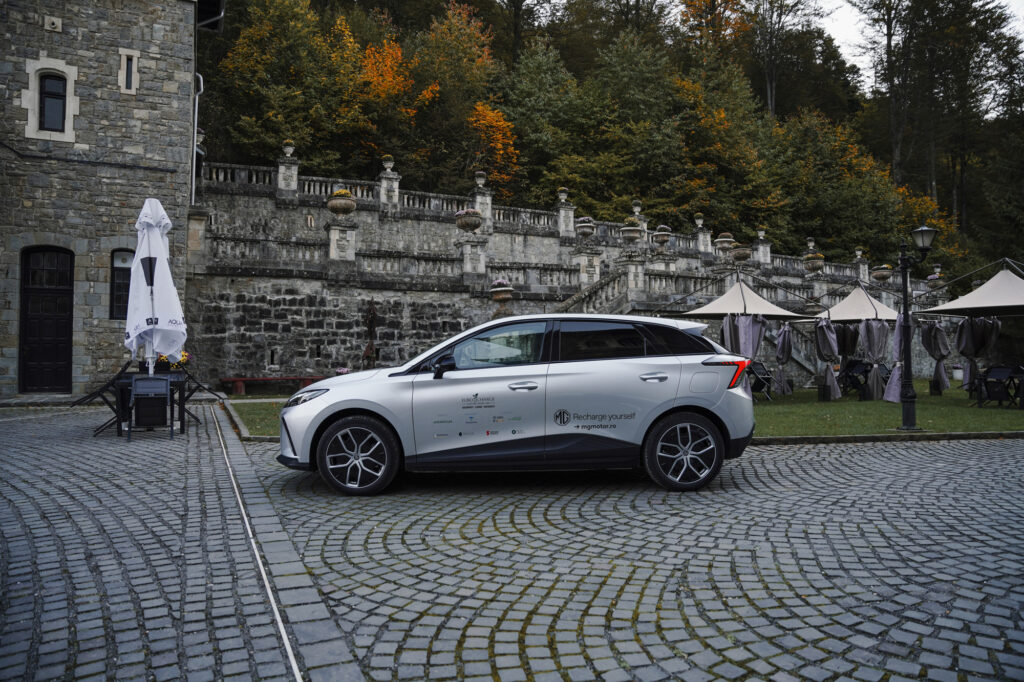
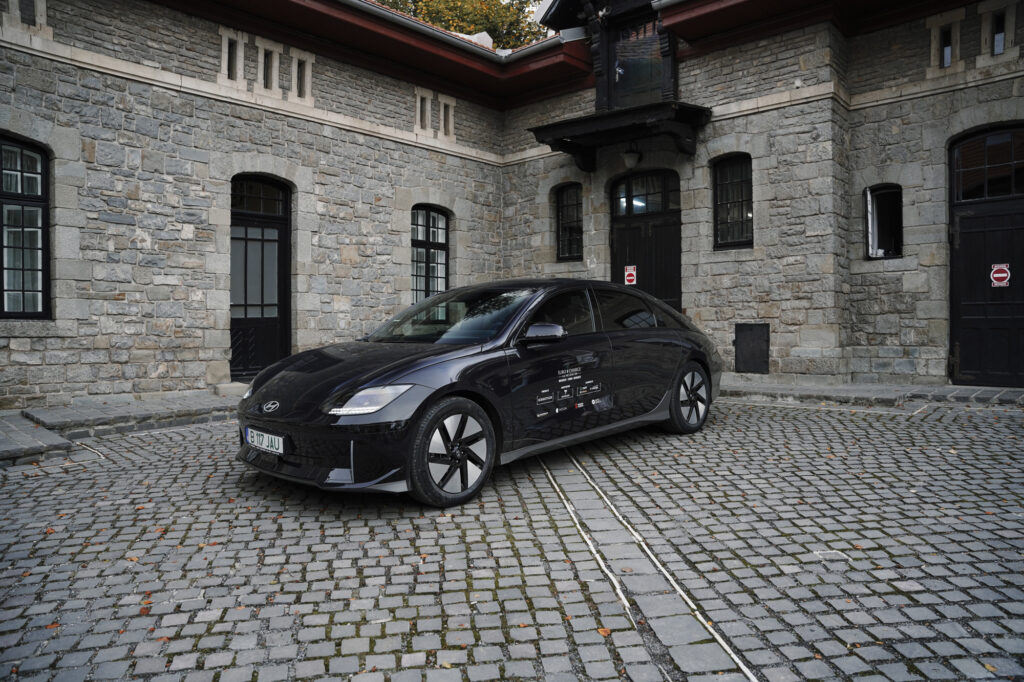
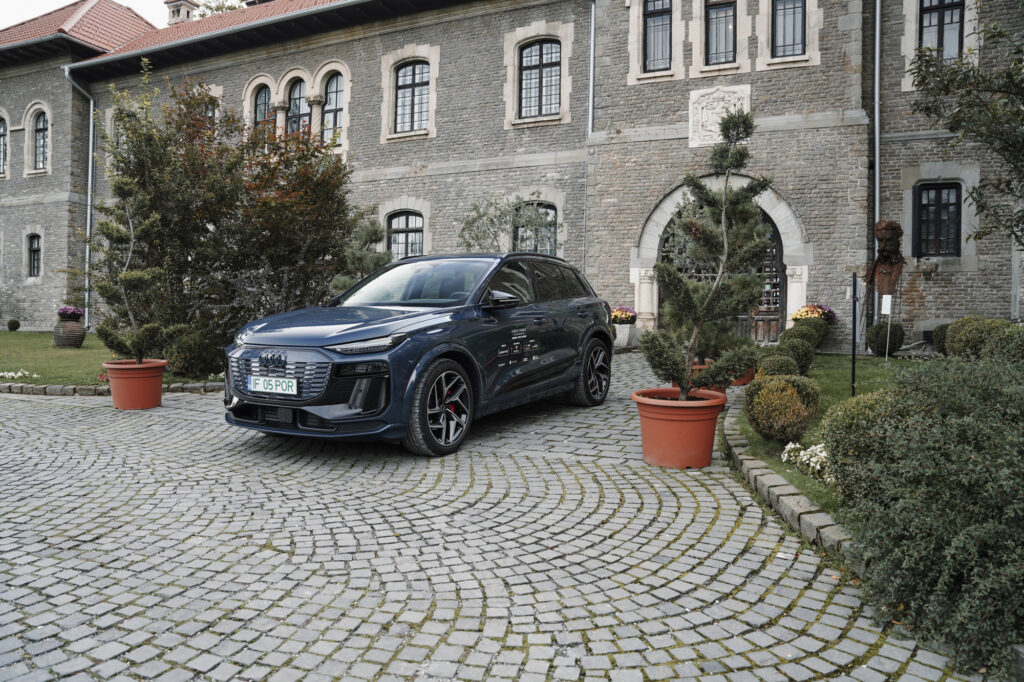
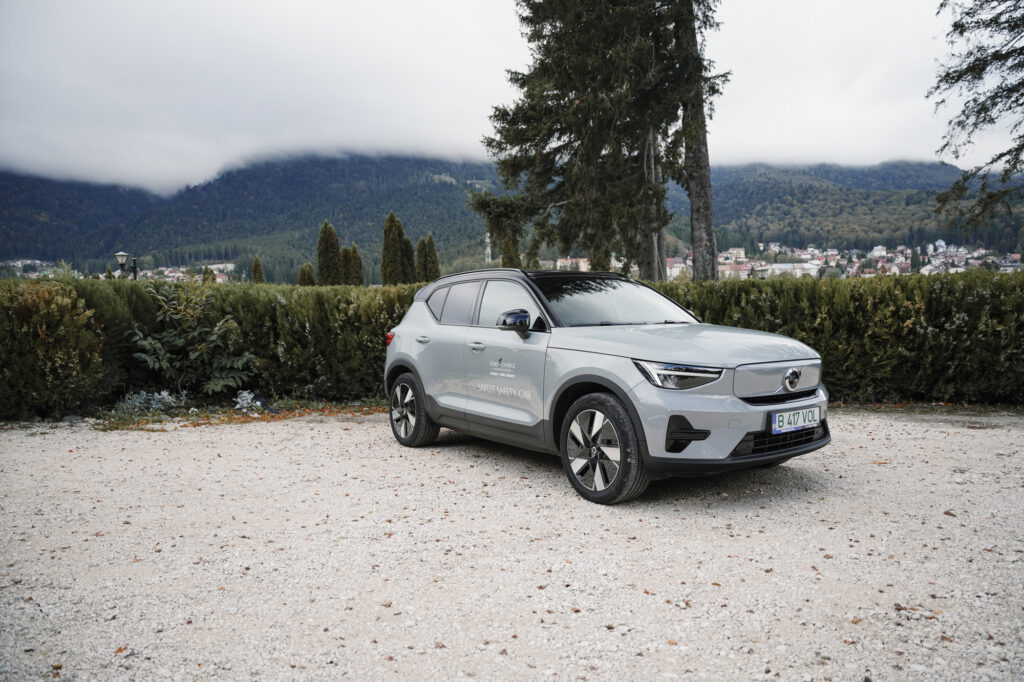
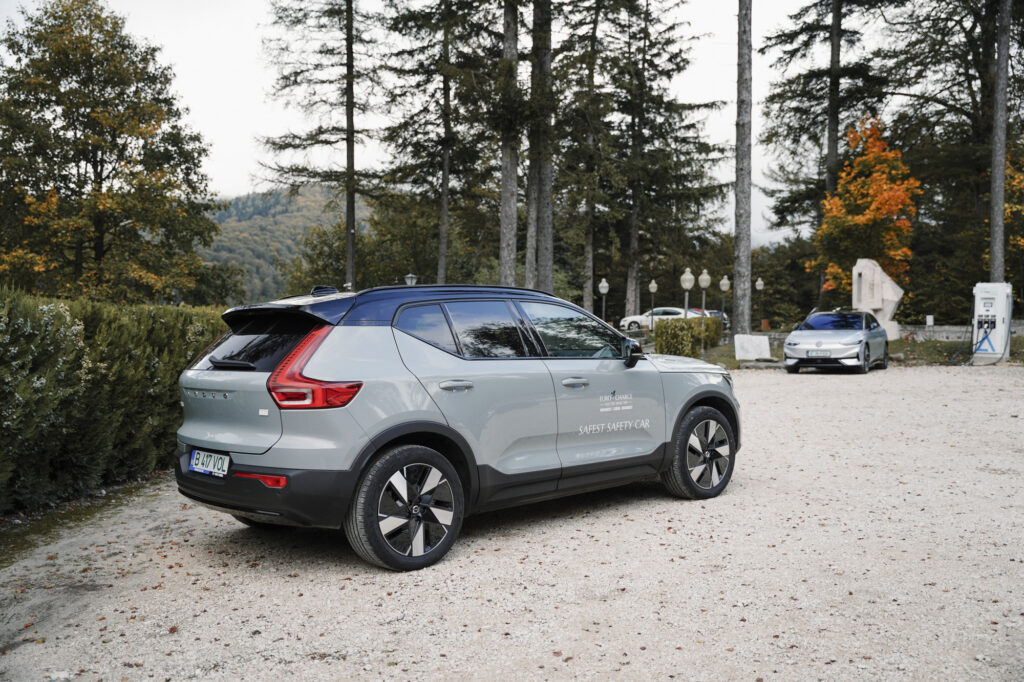
The final destination of the first day of EUROCHARGE was Brasov, where we arrived without charging our electric cars (with one exception, but that was just to take advantage of the fact that there are charging stations at the Cantacuzino Castle unless we need them).
Overall, on a steadily uphill route totaling about 170 kilometers (of which about 37 kilometers were highway), the electric cars on the tour ranged from 16 to 22 kWh/100 kilometers, and that meant somewhere between 33% – 47% of net battery capacity, depending on the model.


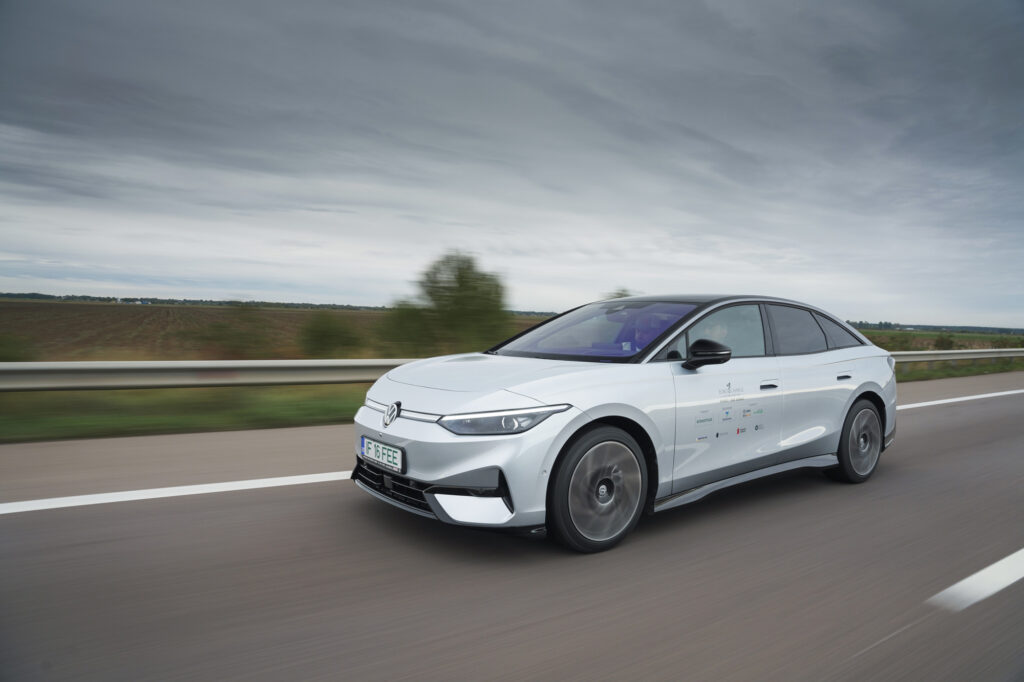
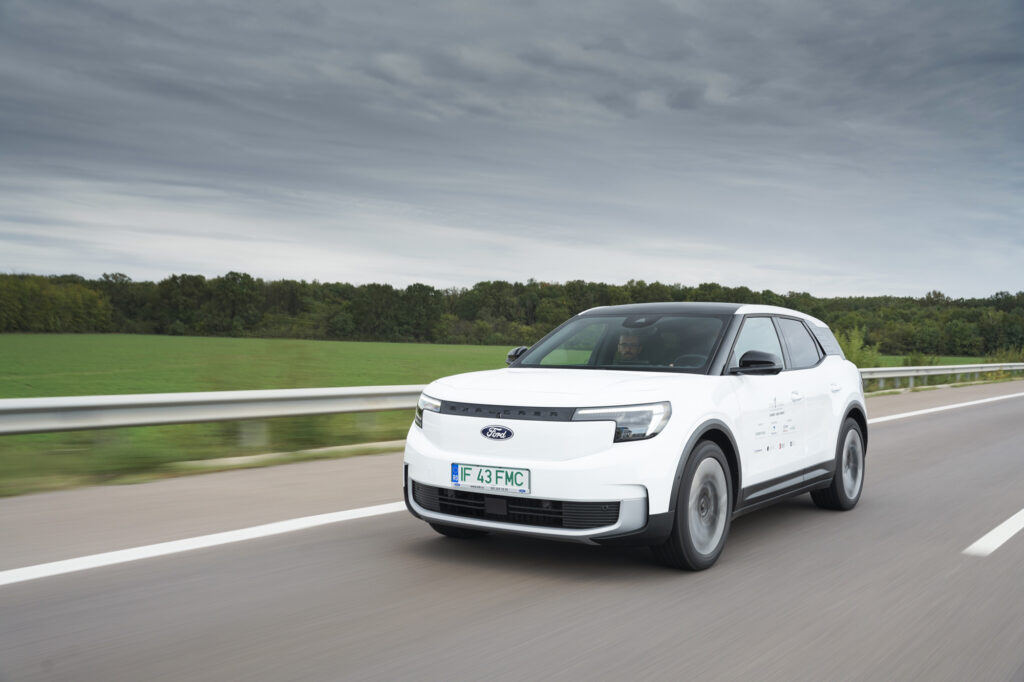
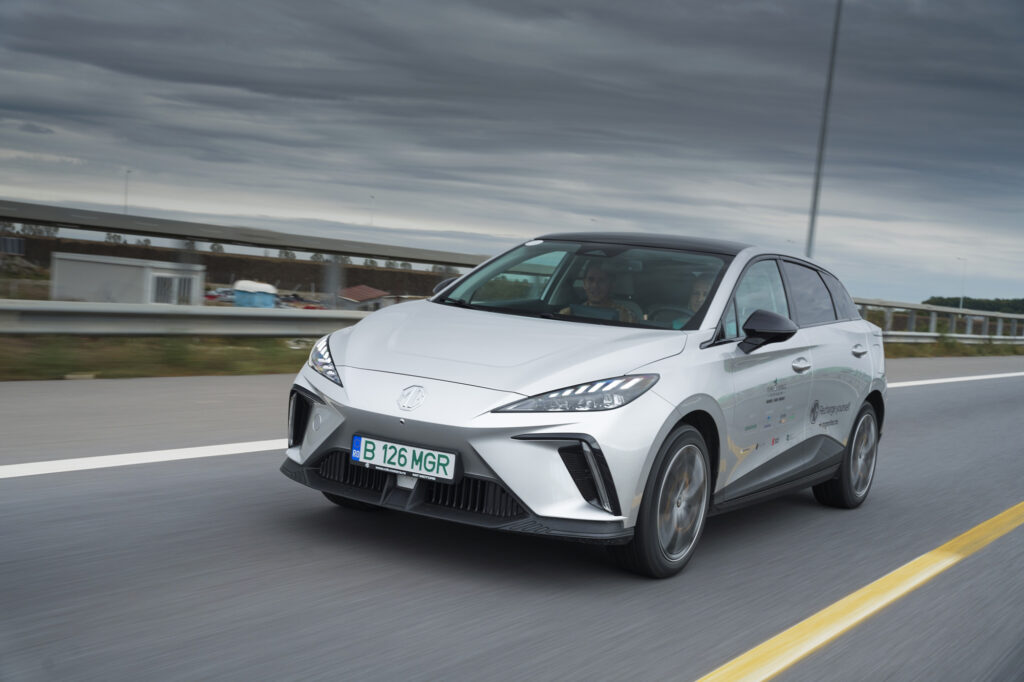

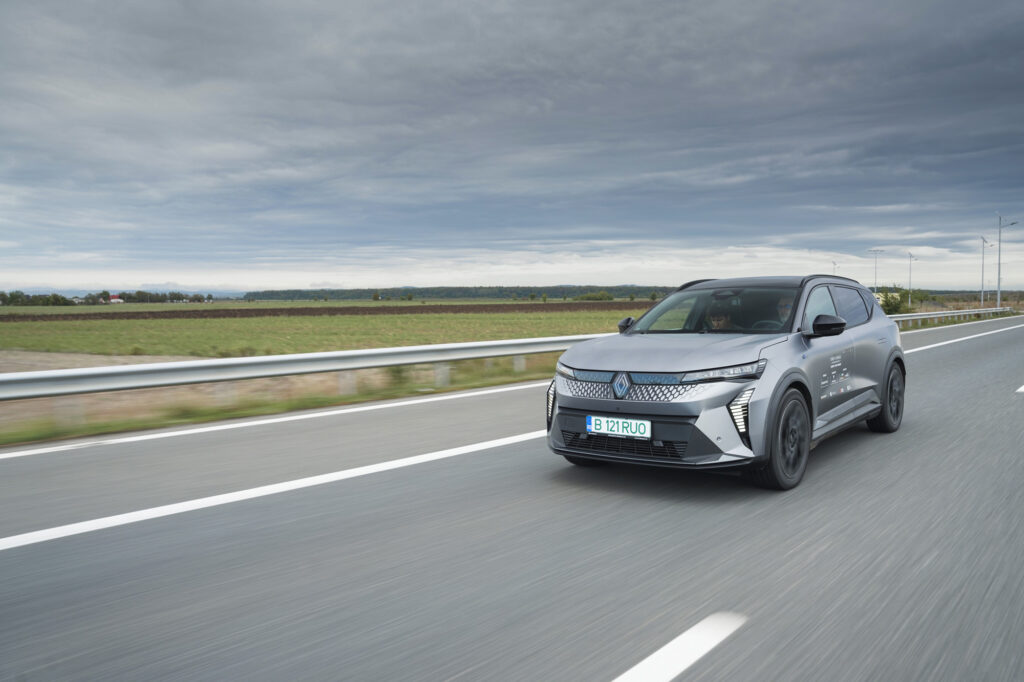
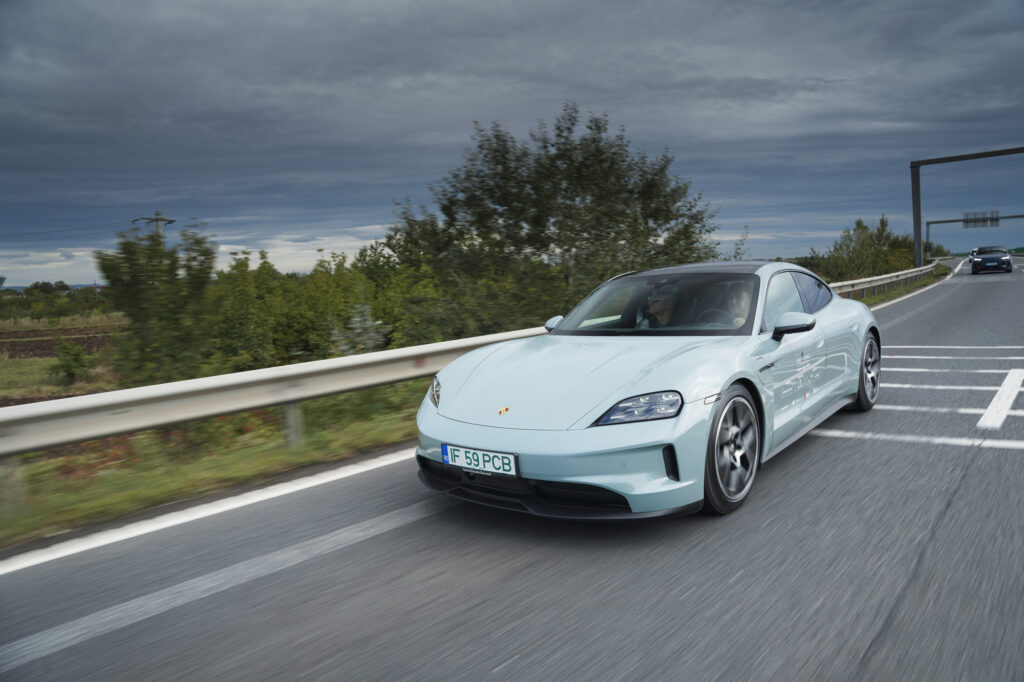
Brasov is a city we are already familiar with from previous editions of the electric car tours organized by AUTOCRITICA, and that’s because it’s home to a Vitesco Technologies automotive components production plant that we visited two years ago.
Changes in the automotive industry: Schaeffler merged with Vitesco Technologies
We reached this production facility again at EUROCHARGE, but this time for a completely different reason: on October 1, Vitesco Technologies successfully completed the merger with German automotive components manufacturer Schaeffler announced a year ago.
Founded in 1946 by the Schaeffler brothers in Herzogenaurach, Germany, where Adidas and Puma are also headquartered, Schaeffler was one of the world’s largest automotive component manufacturers even before the merger.
Following the merger with Vitesco Technologies, Schaeffler has become the world’s largest manufacturer of automotive components and software for electric cars, with annual sales of around €25 billion. Globally, the company employs around 120,000 people in more than 250 locations, including more than 100 production facilities and 44 research and development centers.
As a result of the move, the manufacturing facility in Brasov and the research and development centers owned by Vitesco Technologies in Timisoara, Iasi and Sibiu are virtually integrated into Schaeffler. The resulting new company employs more than 9,000 people in Romania and has a turnover of almost €1.5 billion by 2023.

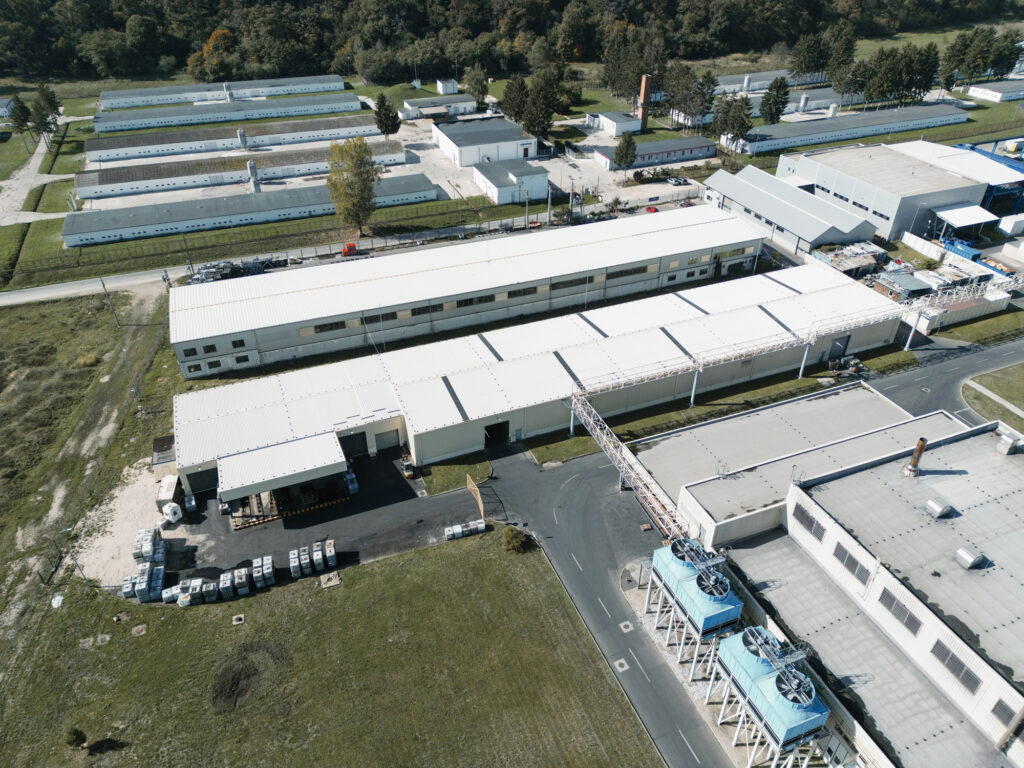
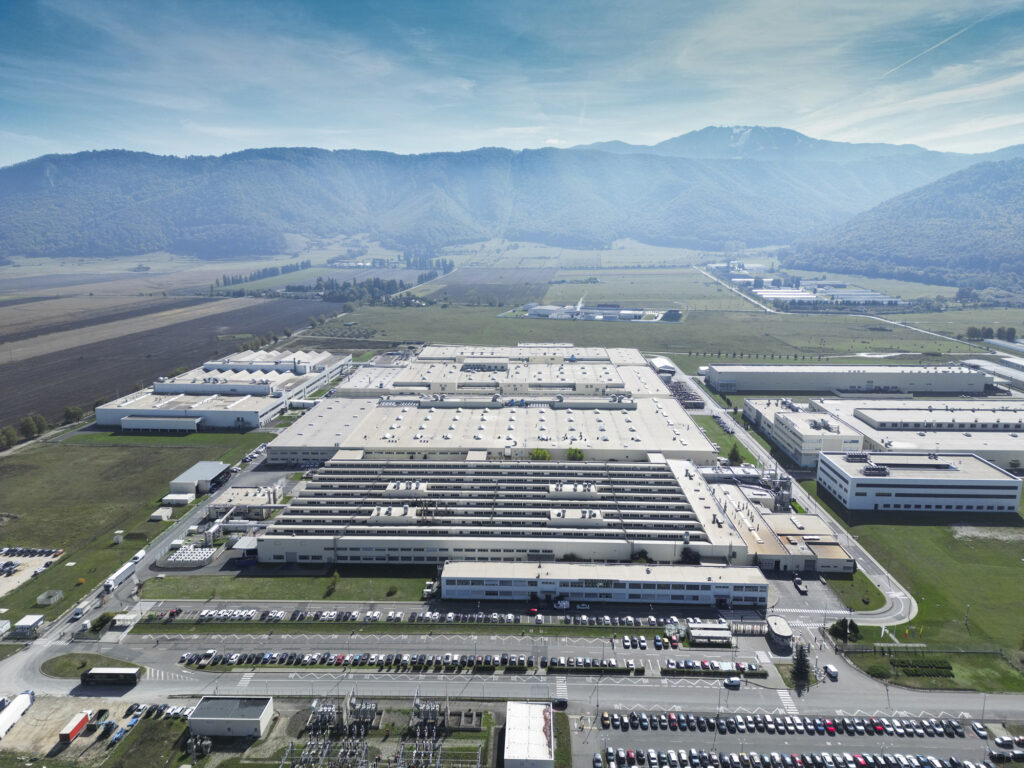

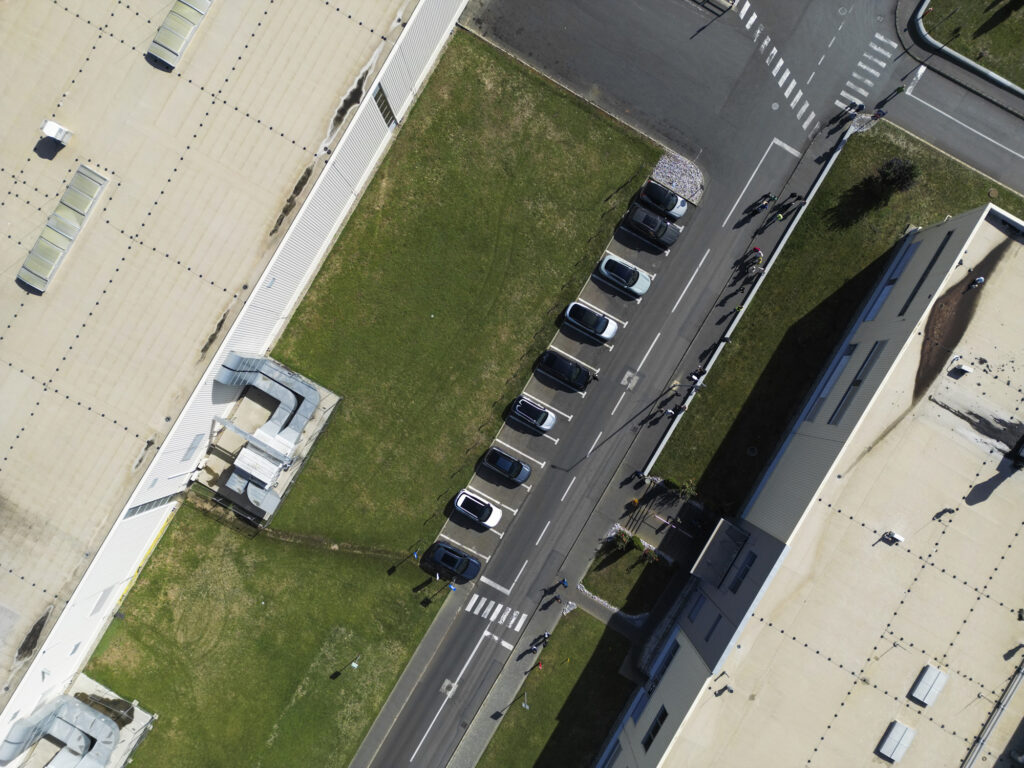
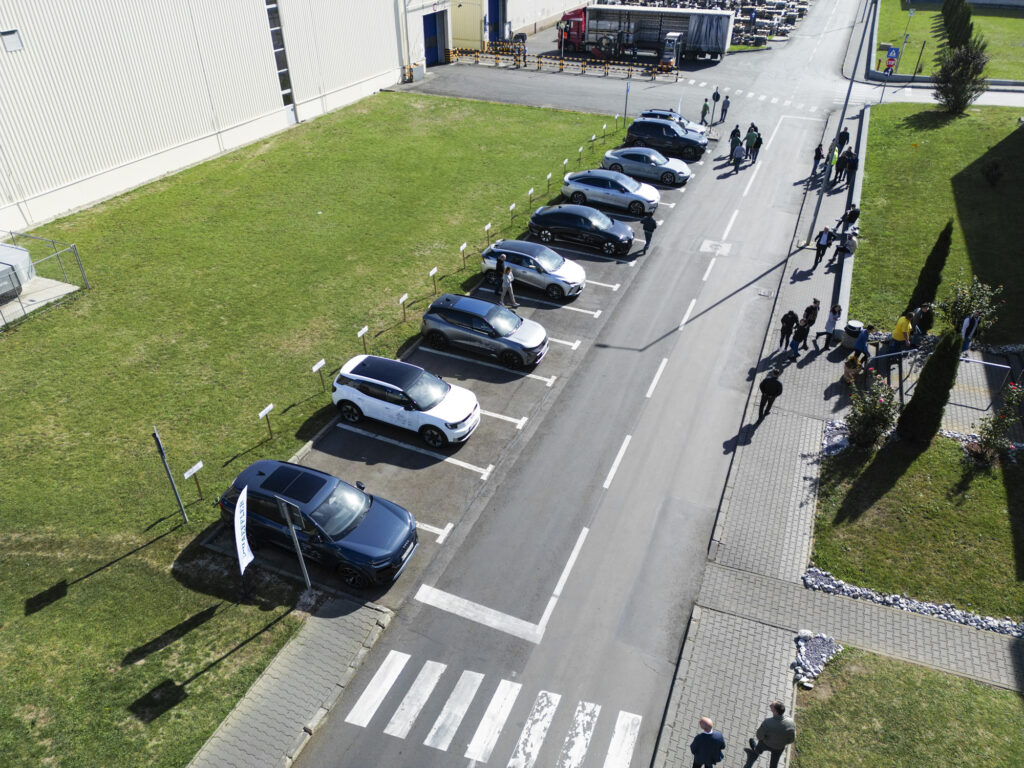
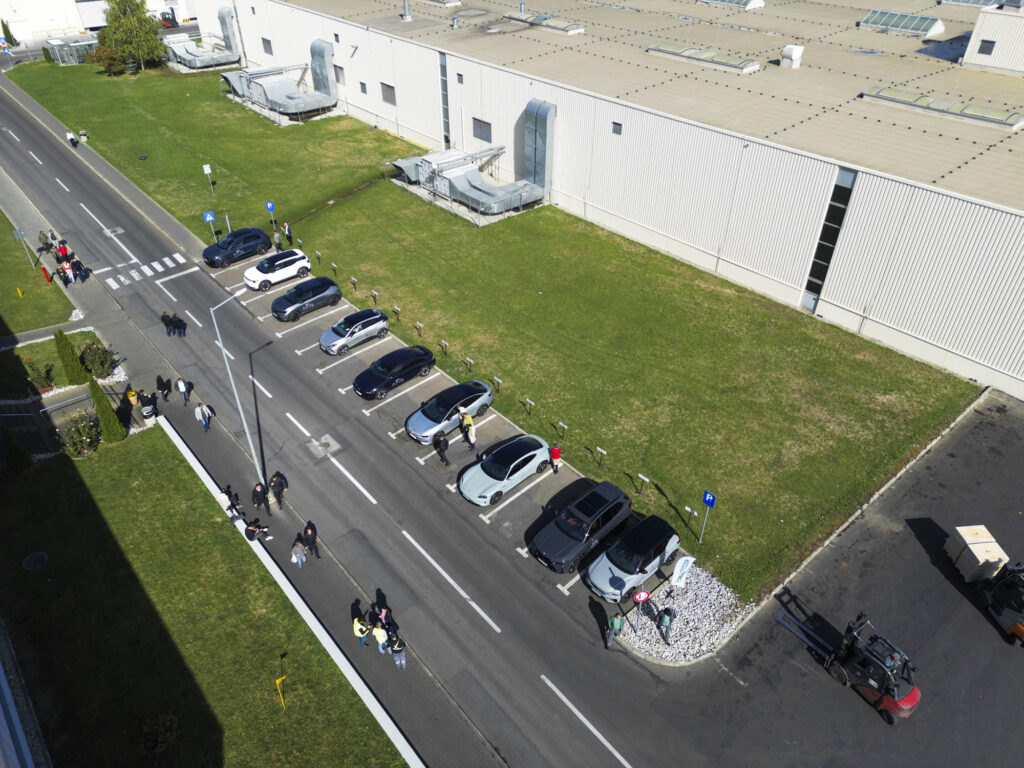


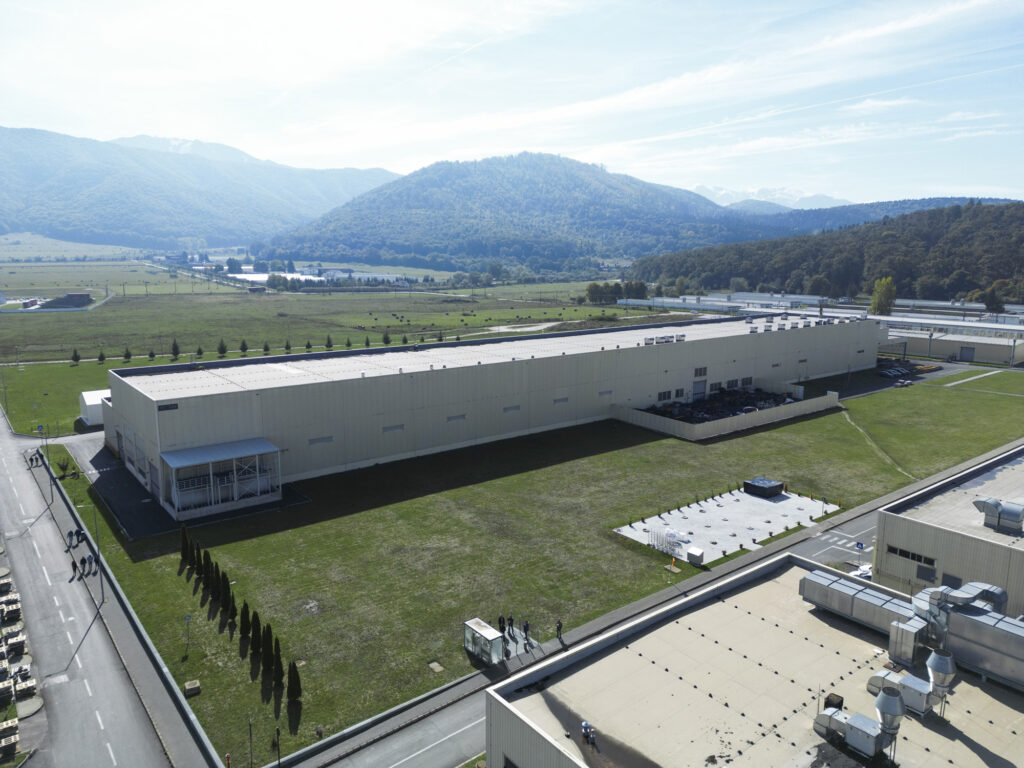

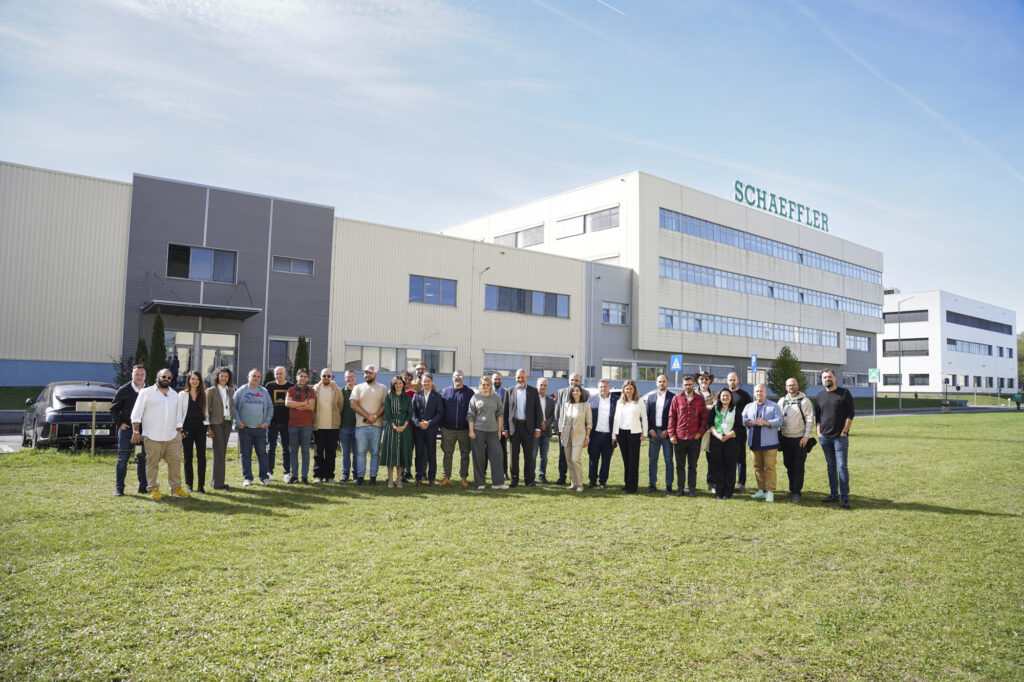
What Schaeffler produces in Romania
Schaeffler already has a long-standing presence in Romania. This year, the German company will celebrate the 20th anniversary of the inauguration of its production plant in Cristian in Brasov County, which we visited during #EUROCHARGE.
Schaeffler’s business has expanded in Brasov over the years, and there are now 7 production halls here, three of which we visited.
Among them was the hall dedicated to the production of automotive components for motor vehicles, where Schaeffler currently produces many parts for internal combustion engines. One of the most important segments of this hall is engine bearings, where more than 250 employees working in three shifts produce around one million parts a day.
For the automotive components area, Schaeffler has customers all over the world from manufacturers in all market segments. This means that components are produced here for the Dacia Duster as well as for brands such as Ferrari, Lamborghini and Porsche.
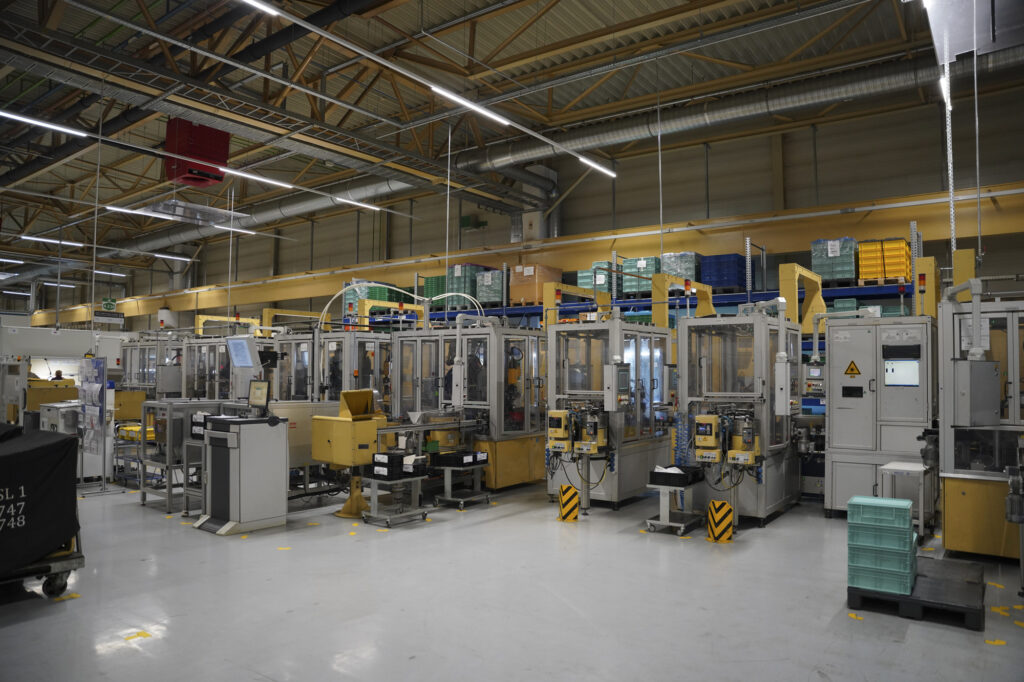
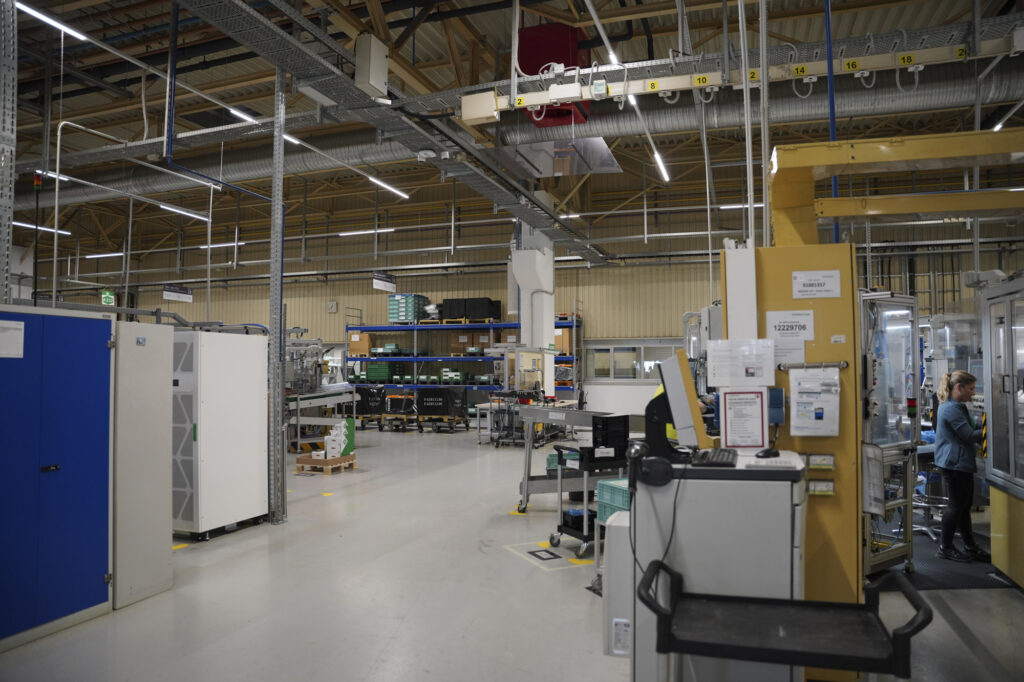
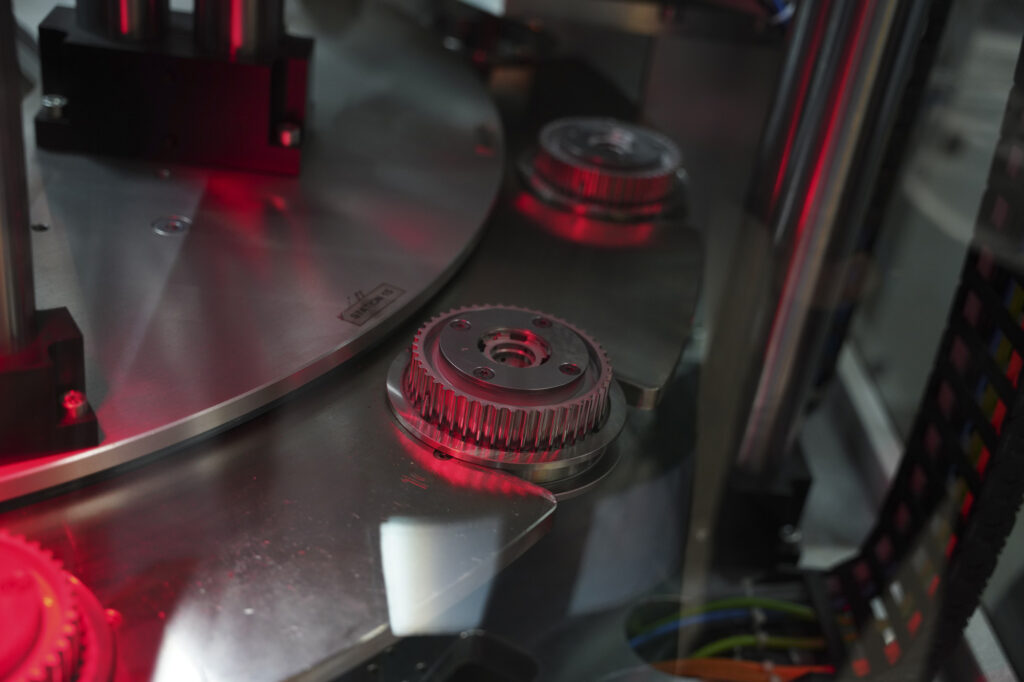

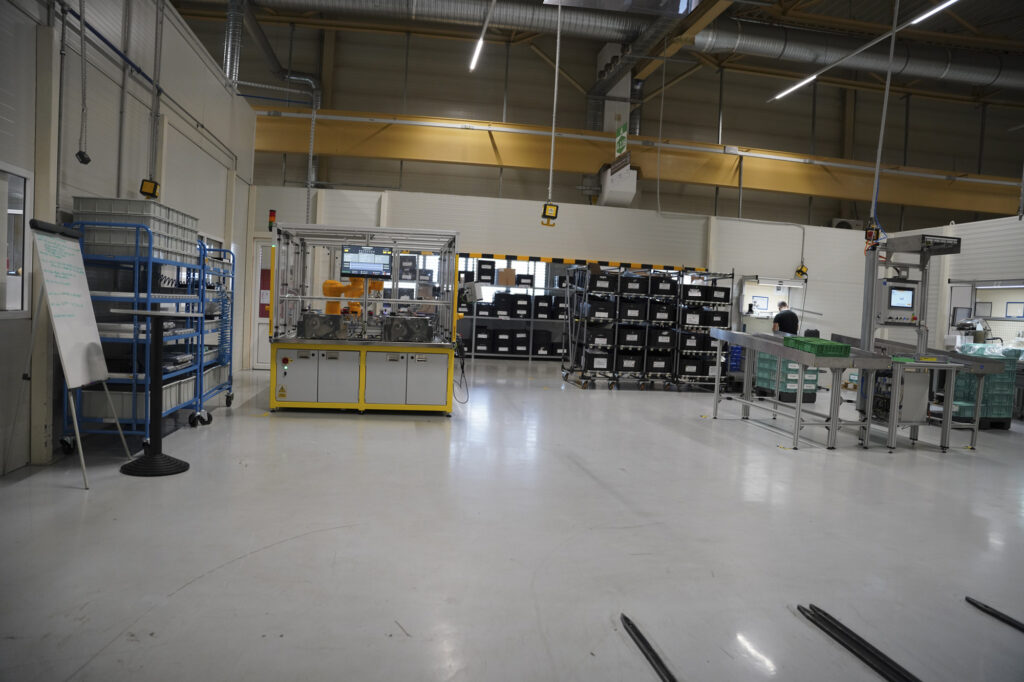

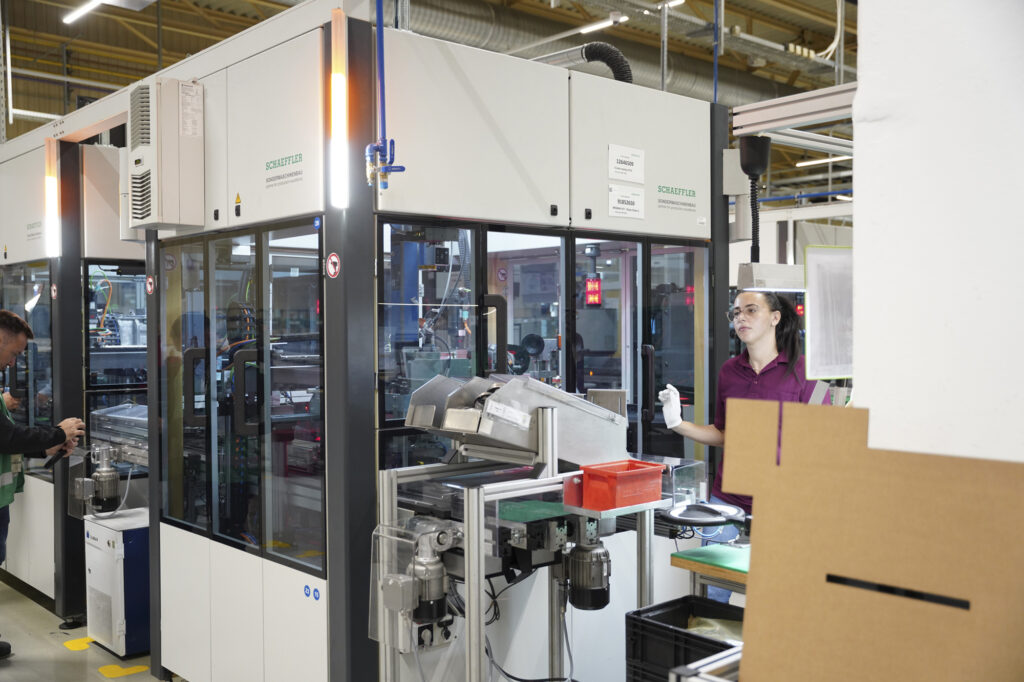
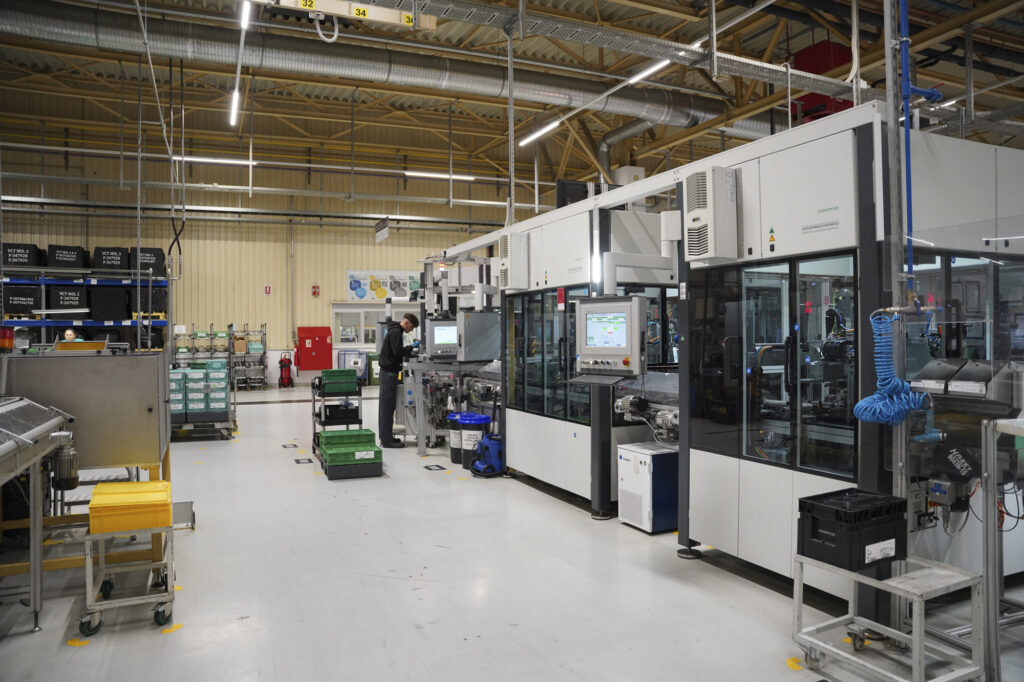
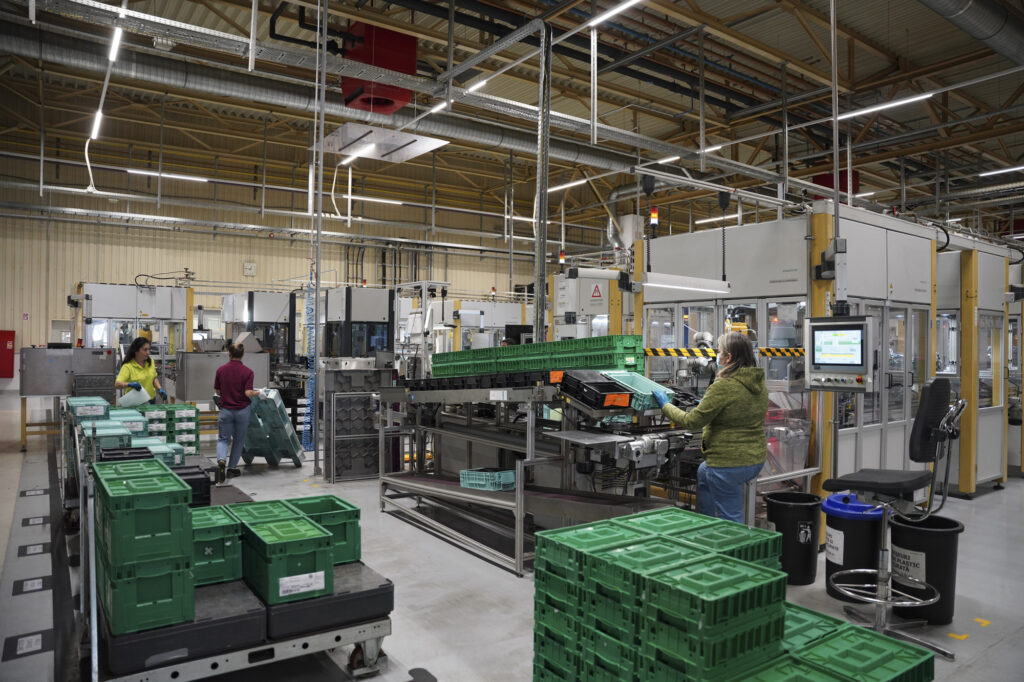
Another hall we visited was dedicated to the production of bearings, and here we’re talking specifically about heavy industry bearings. What exactly does that mean? Here’s a good example: in Brasov, Schaeffler produces bearings for offshore wind turbines with 236-meter-diameter blades and 199-meter-high poles.
The largest bearing I’ve seen in the hall is 2.9 meters in diameter and is made up of more than 3,400 individual components such as hoops, rollers and numerous sensors that can quickly indicate the onset of a possible failure. And speaking of failures, there is a precision measurement laboratory in this hall, completely separate in structure from the rest of the hall, where the bearings are tested before being shipped to the customer. This laboratory can detect measurement errors in the finished product of 3 microns per meter, or 0.003 millimeters per linear meter. It is no coincidence that Schaeffler offers a 25-year warranty on such bearings.
But the bearings impress not only by their size, but also by their mass. For example, the heaviest bearing produced at Schaeffler’s production facility in Brasov weighed more than 12 tons and had a diameter of 3.3 meters, and the customer was a manufacturer of Tunnel Boring Machines (TBMs), the type of machines used to dig subway tunnels.
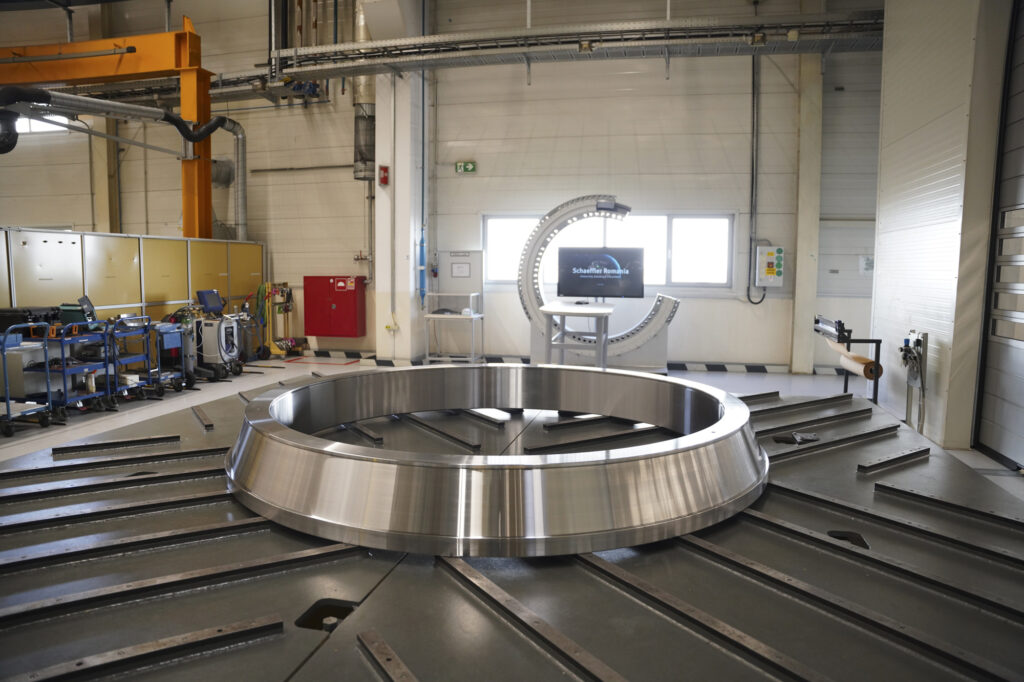

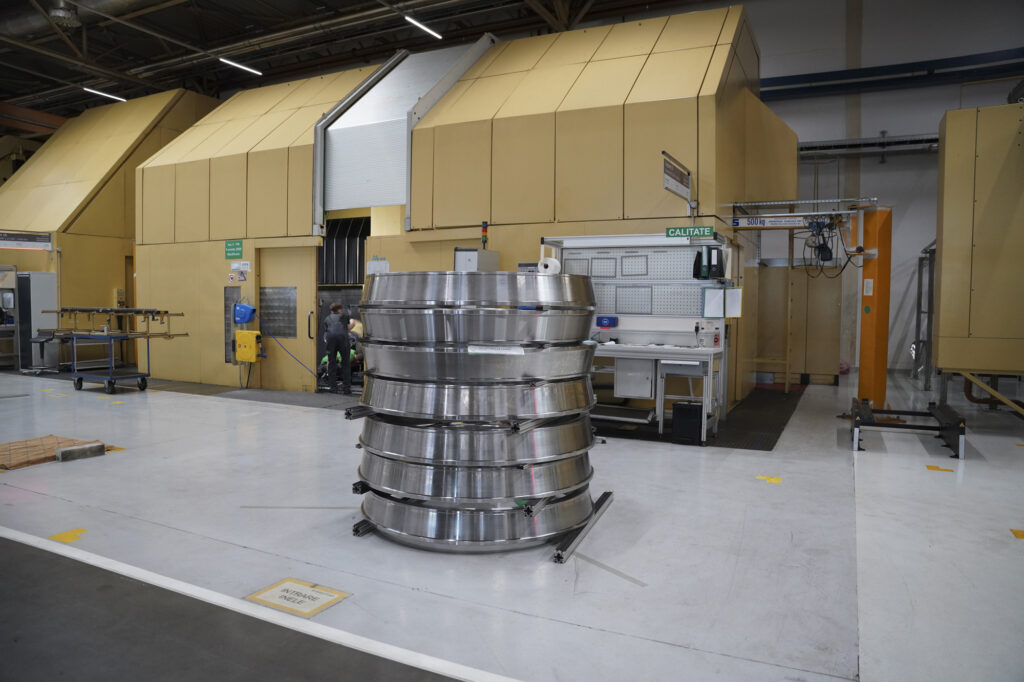
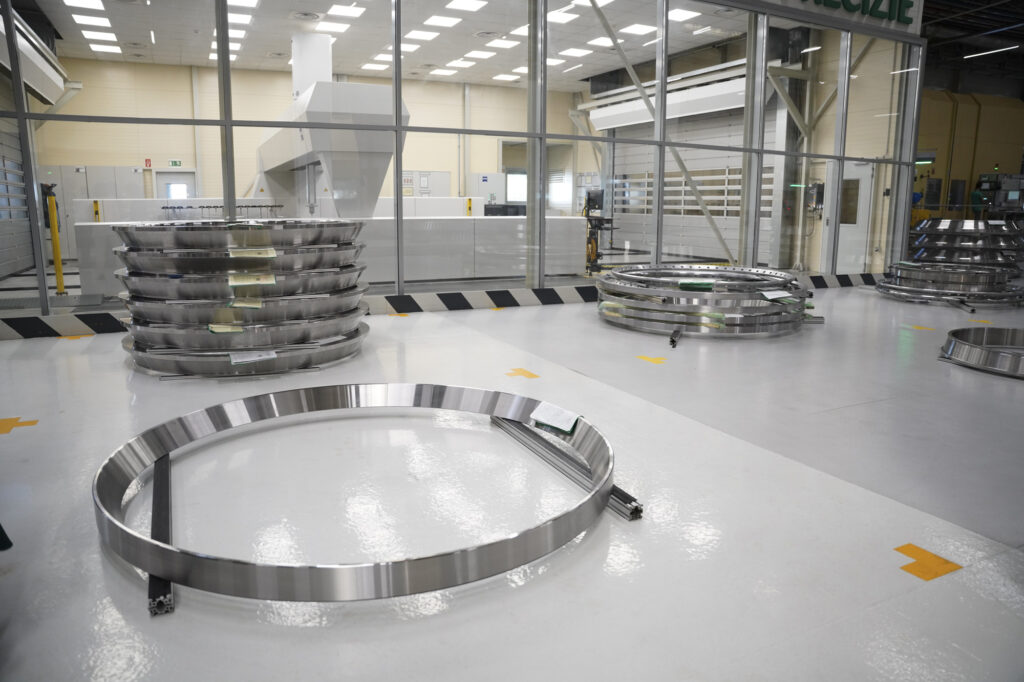
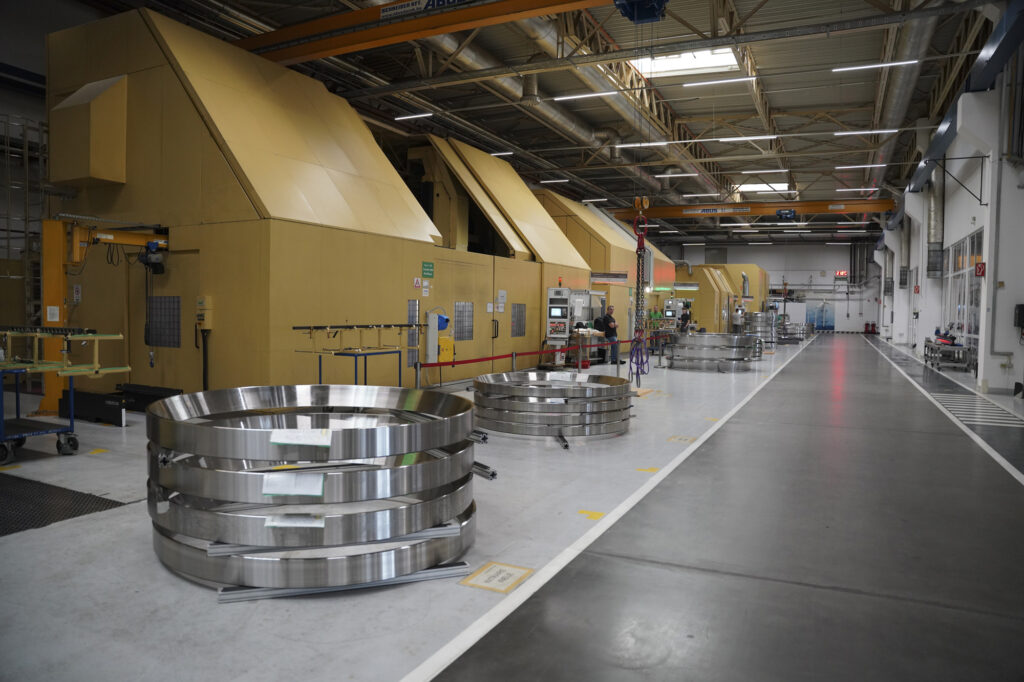
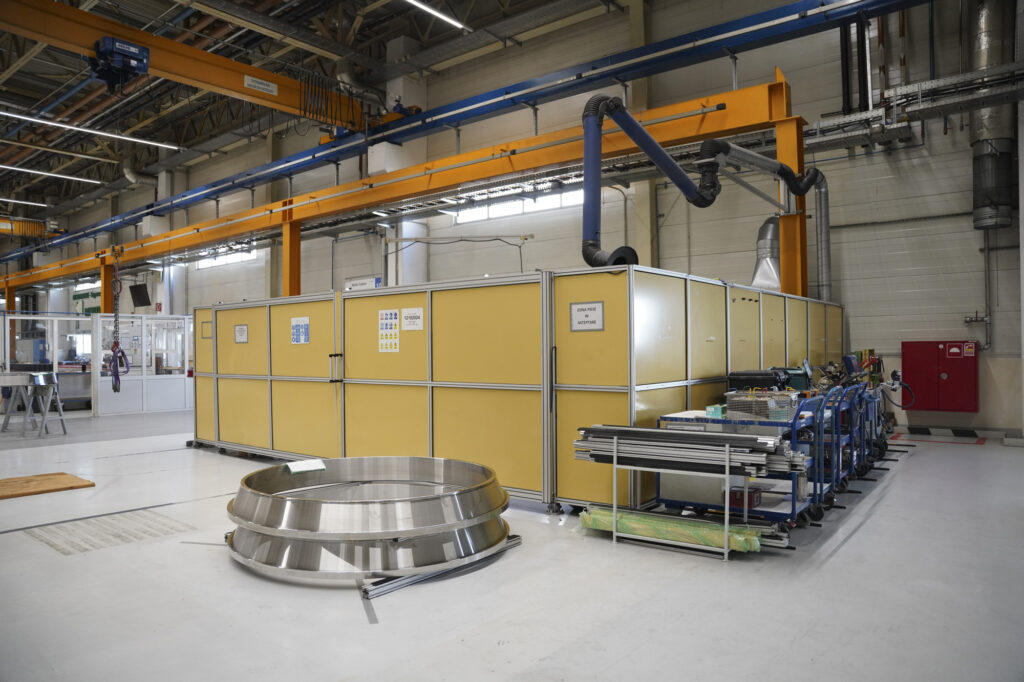
But the most spectacular hall we visited was the forging hall, built with equipment from Germany. Here, steel is hot-formed at temperatures of up to 1,200 degrees Celsius to take the shape of the final product, following an extensive process that includes the use of a rotary furnace and a 4,000-ton hydraulic press. The furnace settings are automatically determined by a computer on the basis of preset parameters, depending on the characteristics of the raw material arriving from steel producers and the requirements formulated by Schaeffler’s customers.
An example of a product made in the forging department is a ring for a bearing to be used in a wind turbine. In fact, most of the products made here are destined for various heavy industry companies.
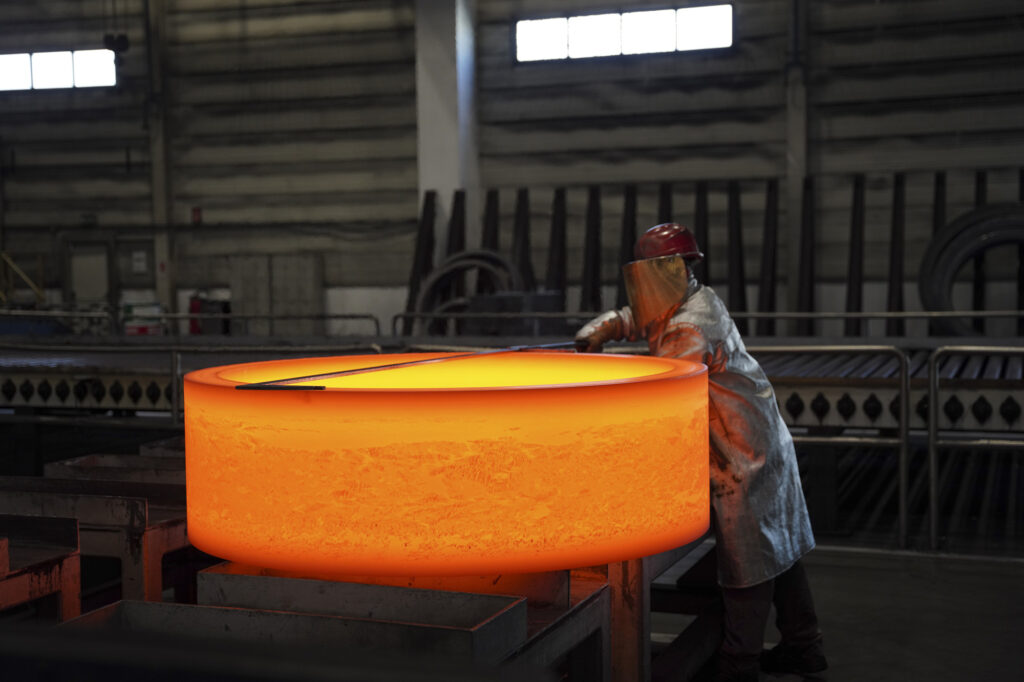
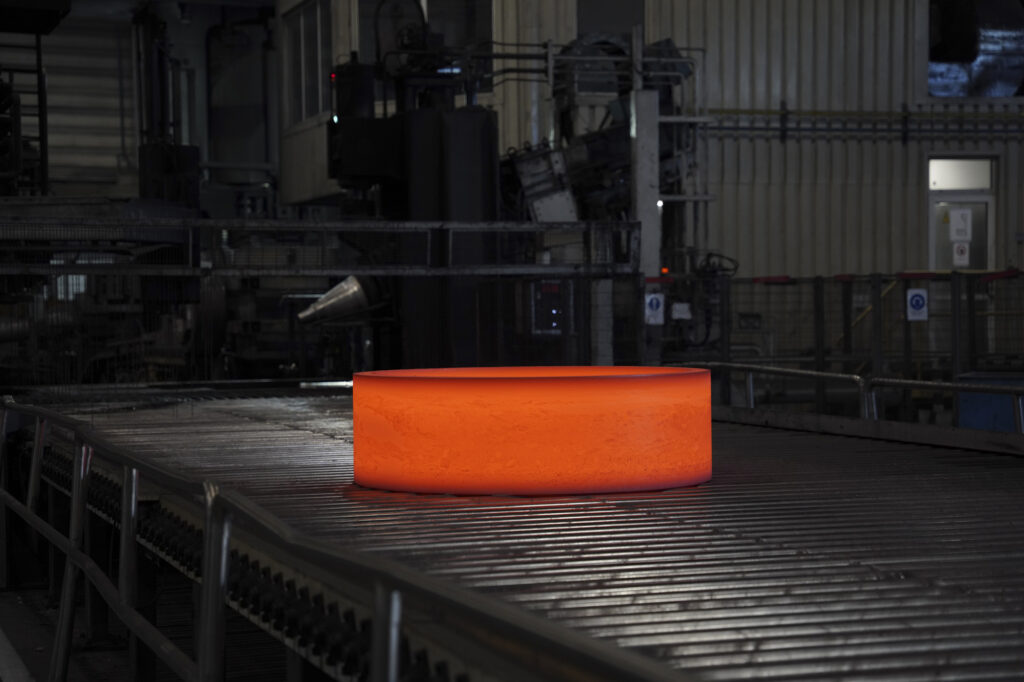
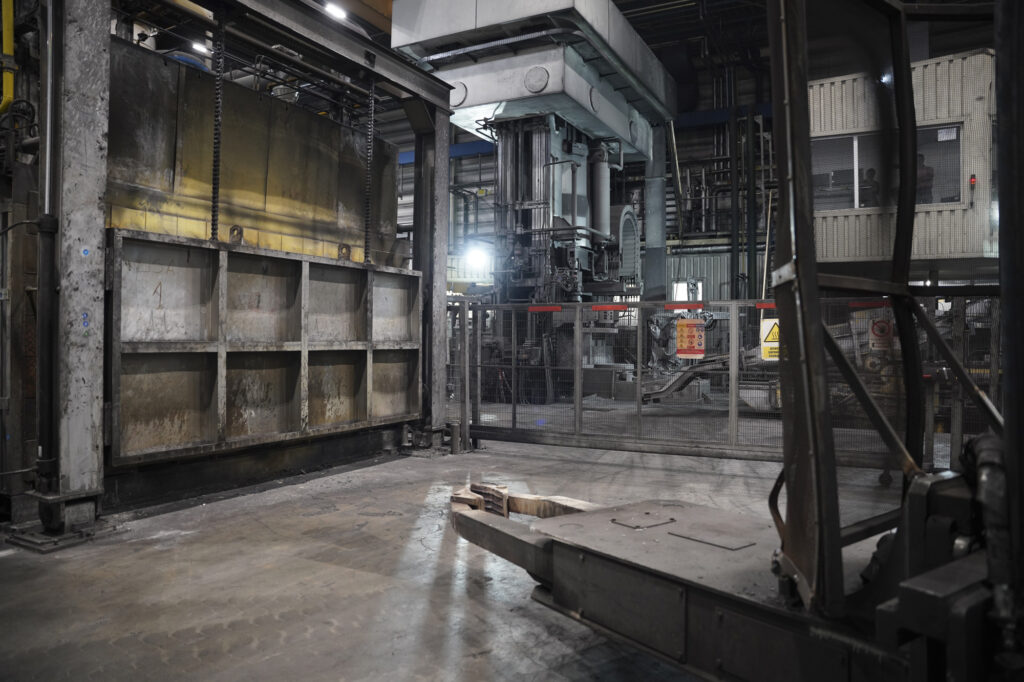
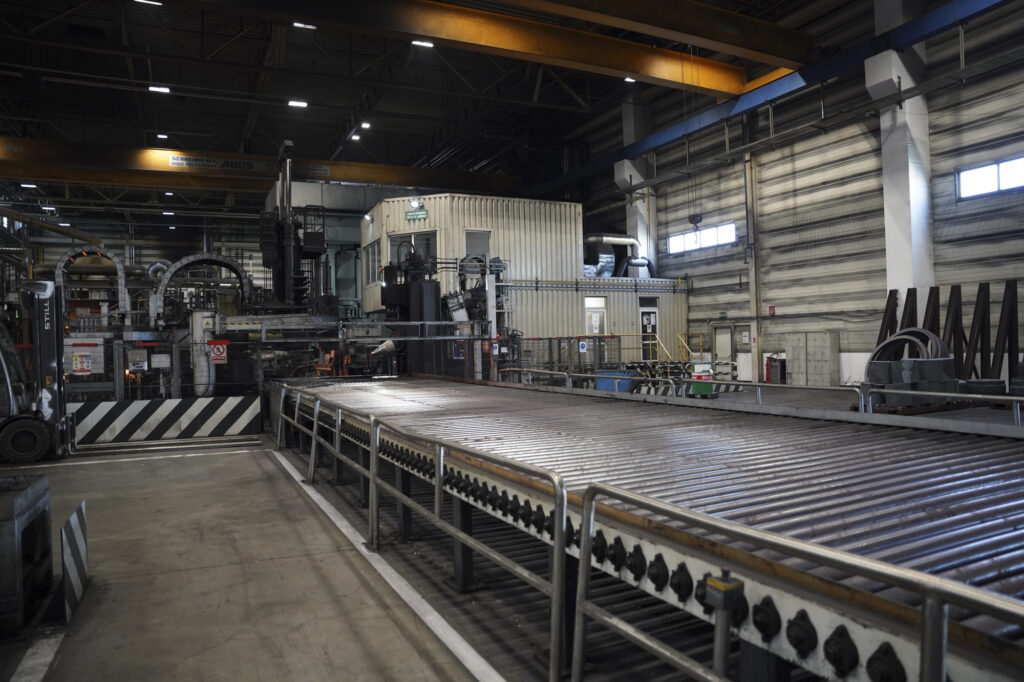
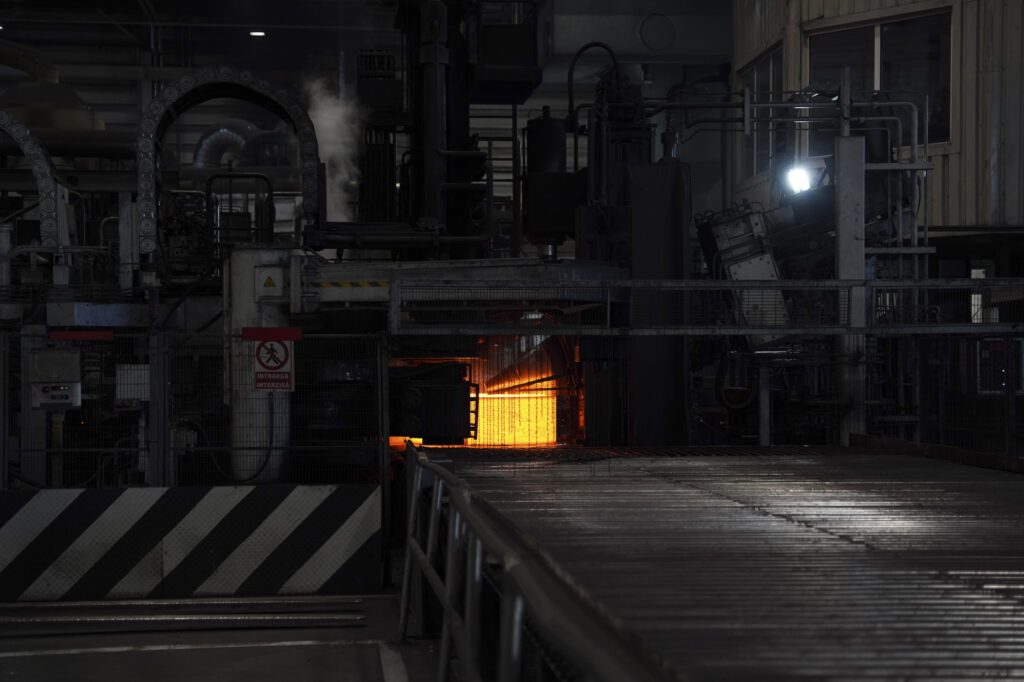

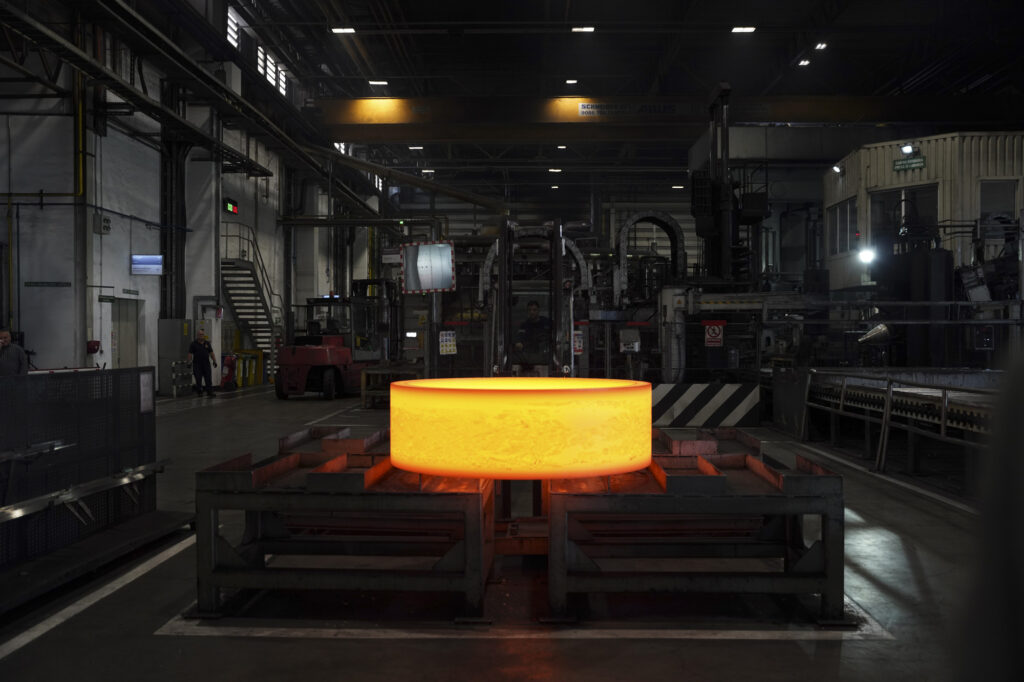
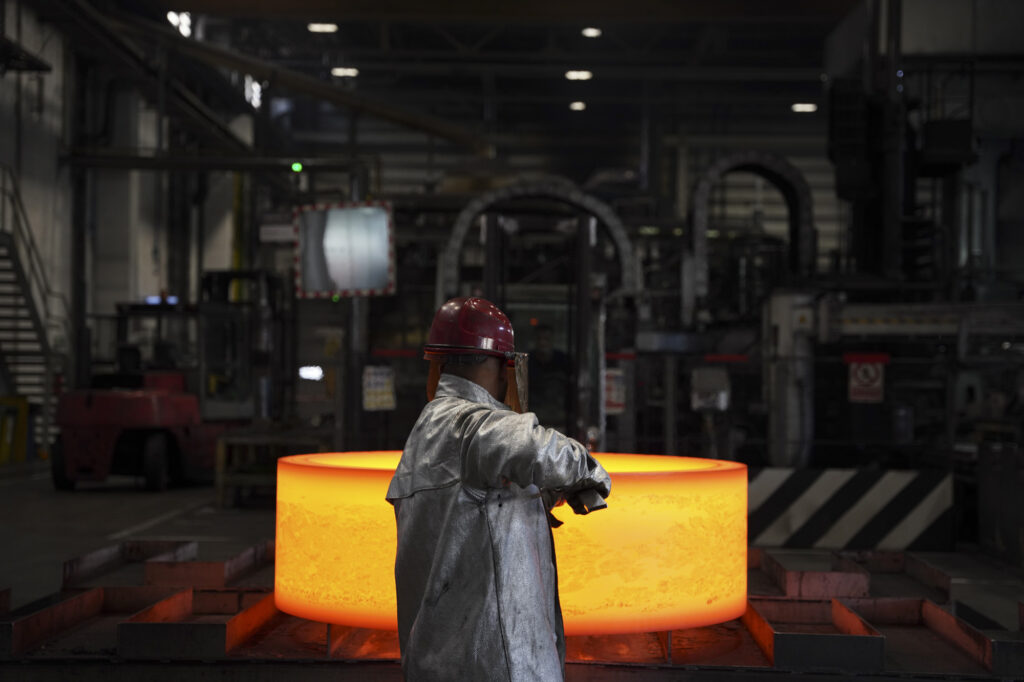
Other Schaeffler activities in Romania
Even if the production unit remains today the main industrial activity for Schaeffler in Cristian, the German company has gradually expanded its competences in Brasov county over the last decade.
Thus, the research and development department at the Cristian production site was transformed in 2012 into an Engineering Center which today has over 200 employees working in various fields of the automotive industry such as Product Design, Technical Calculation, Technical Analysis, CAD (Computer Aided Design) Methods, CAE (Computer Aided Engineering) Software Programming, but also design and development of new concepts.
Later, at the end of 2019, Schaeffler also inaugurated an 8,000 square meter Test Center in Cristian with 10 test cells and 25 test stands for engine components.
Also in Brasov, Schaeffler established the German Vocational School Kronstadt in 2012, the first dual vocational school in Romania, with the aim of preparing the workforce for the production unit.
How the Ghimbav production unit has expanded
Meanwhile, in the neighboring commune of Ghimbav, business at the Vitesco Technologies production facility, which has just joined the Schaeffler portfolio, is booming. Just two years after the previous visit in 2022, the production unit has significantly expanded its competencies and is gradually migrating from the production of components for internal combustion engines (such as fuel pumps and Selective Catalytic Reduction SCR systems for treating exhaust gases with urea-based solution) to components dedicated in particular to electric cars.
So the EUROCHARGE visit brought many new elements into the equation. For example, the production of electric car inverters, essential components for electric and plug-in hybrid cars that convert direct current (DC) from the battery into alternating current (AC) delivered to the motor, is now in full swing, having only just started in 2022.
We initially visited the production area for electronic boards known in the industry as Printed Circuit Boards (PCBs), a kind of base boards for inverters on which numerous components are connected depending on the specifications of the inverter to be produced.
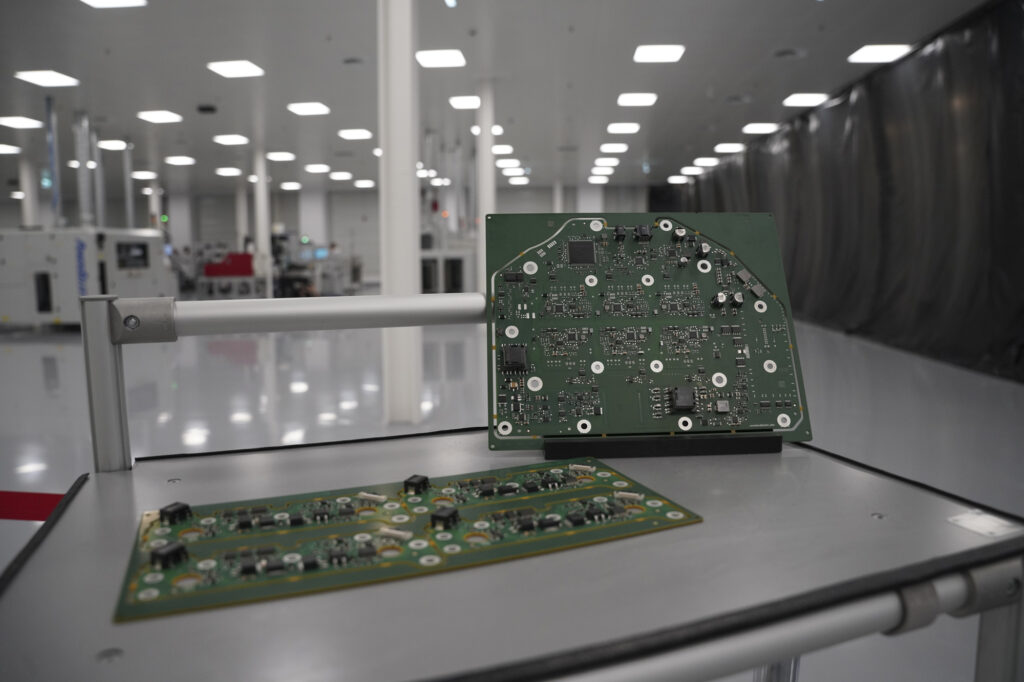
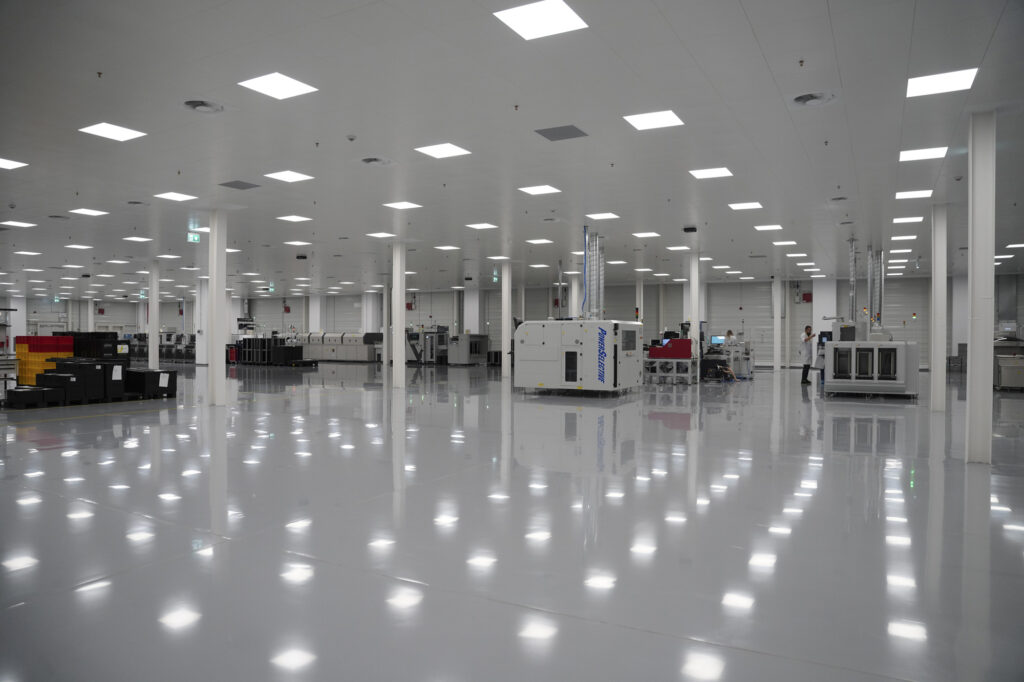
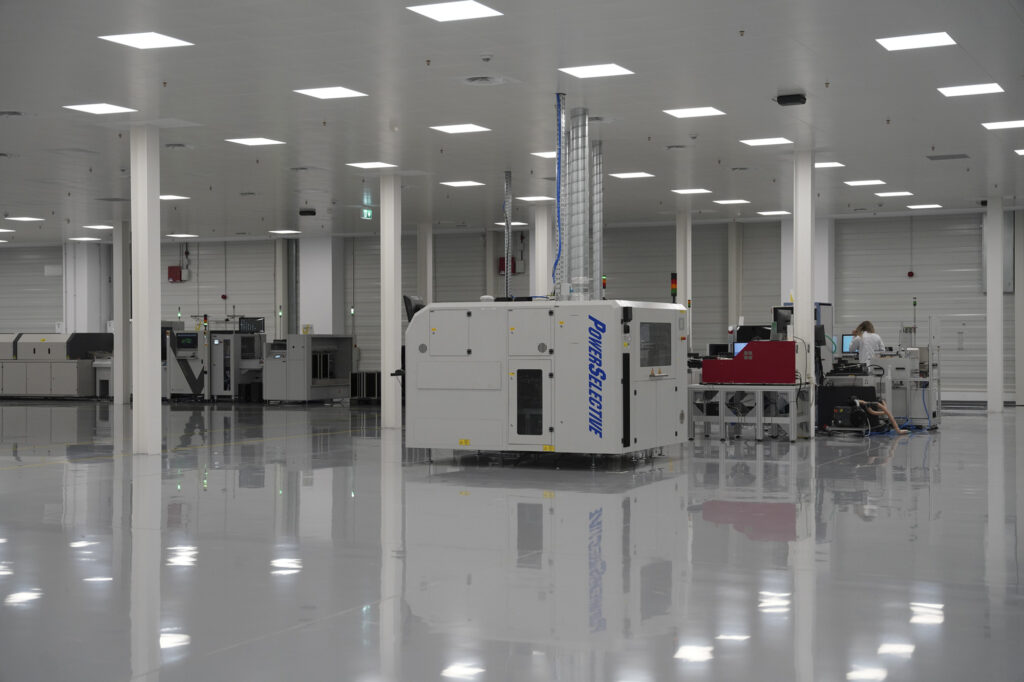


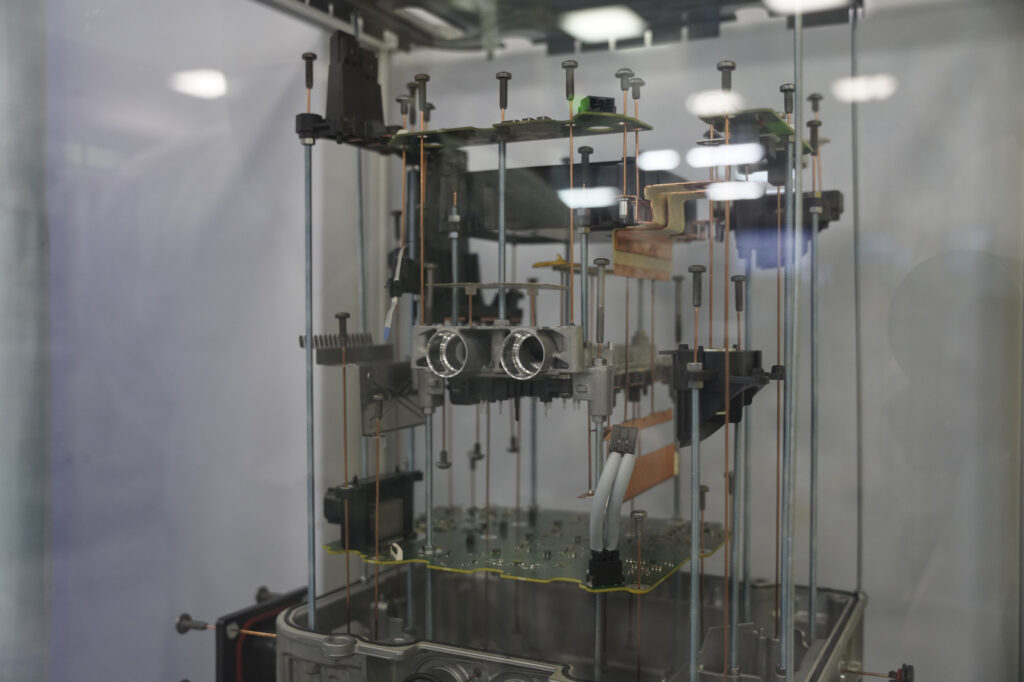
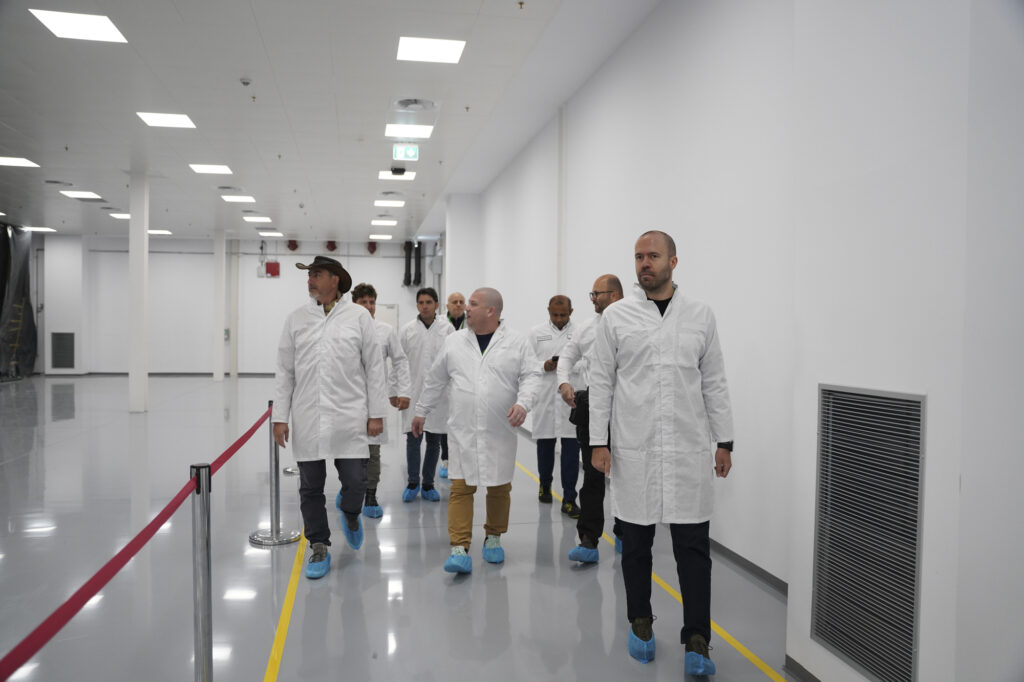
Then we reached the area where the inverters are sealed by an automated system with industrial robots. The inverters we saw here are being produced at a rate of 500 units a day and are destined for the Renault 5 electric model, which can already be ordered on the Romanian market.
In addition, the electric expansion of the production unit does not end here: in one of the halls will be inaugurated in the coming weeks an area for the production of Belt Starter Generator for hybrid cars.
Perhaps the most important project in the works, however, is engine production for the new Kia EV3 compact SUV, which will arrive in Europe by the end of this year with a 203 hp engine and a range of up to 600 kilometers.
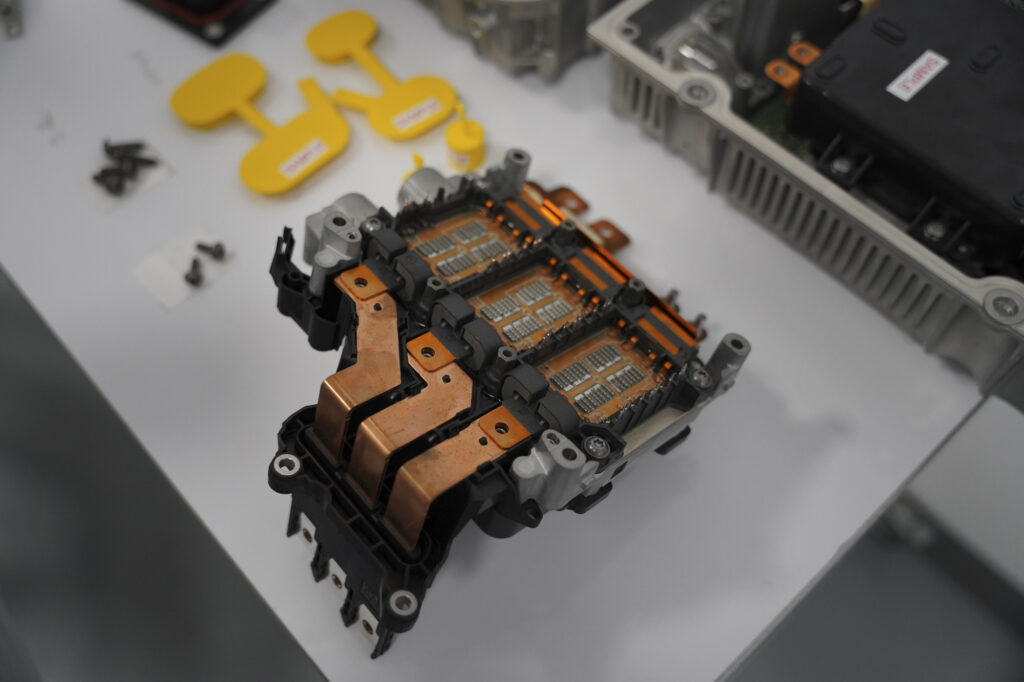
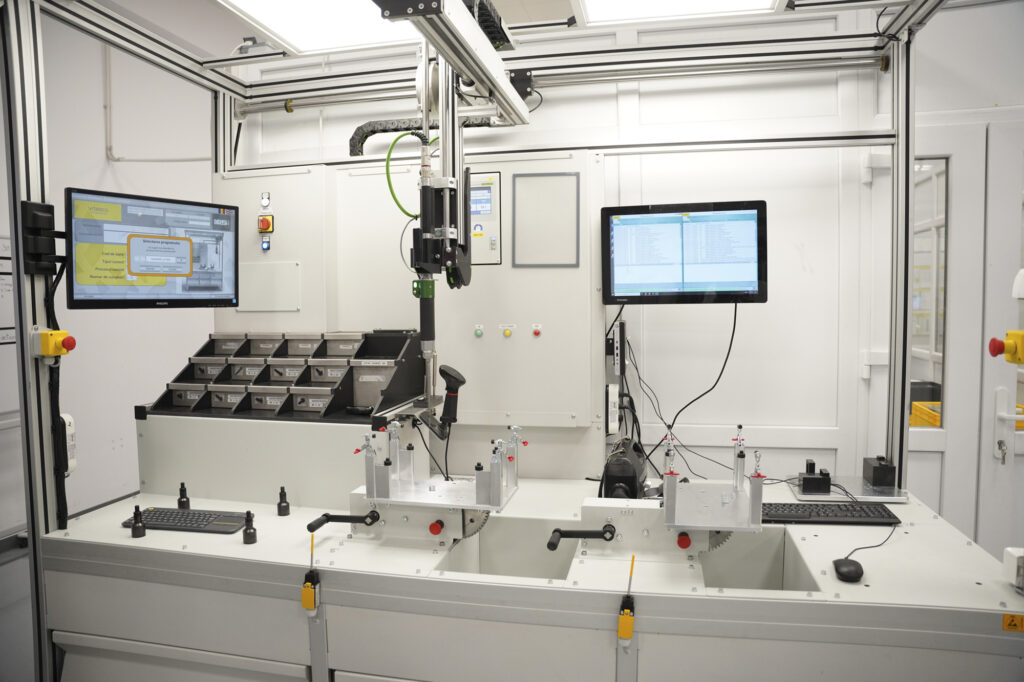
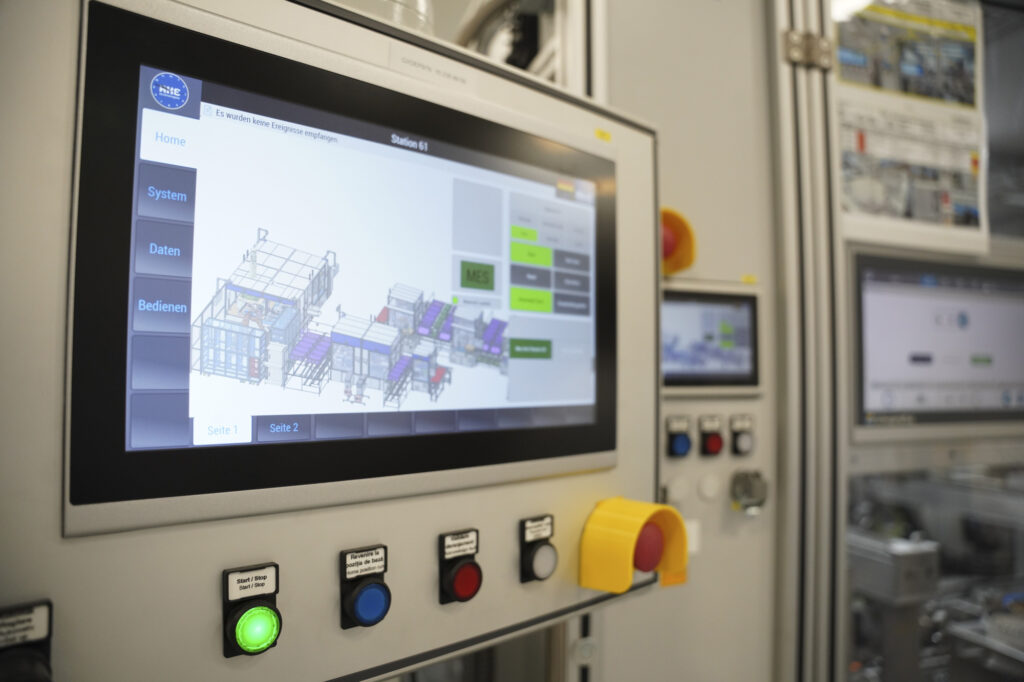
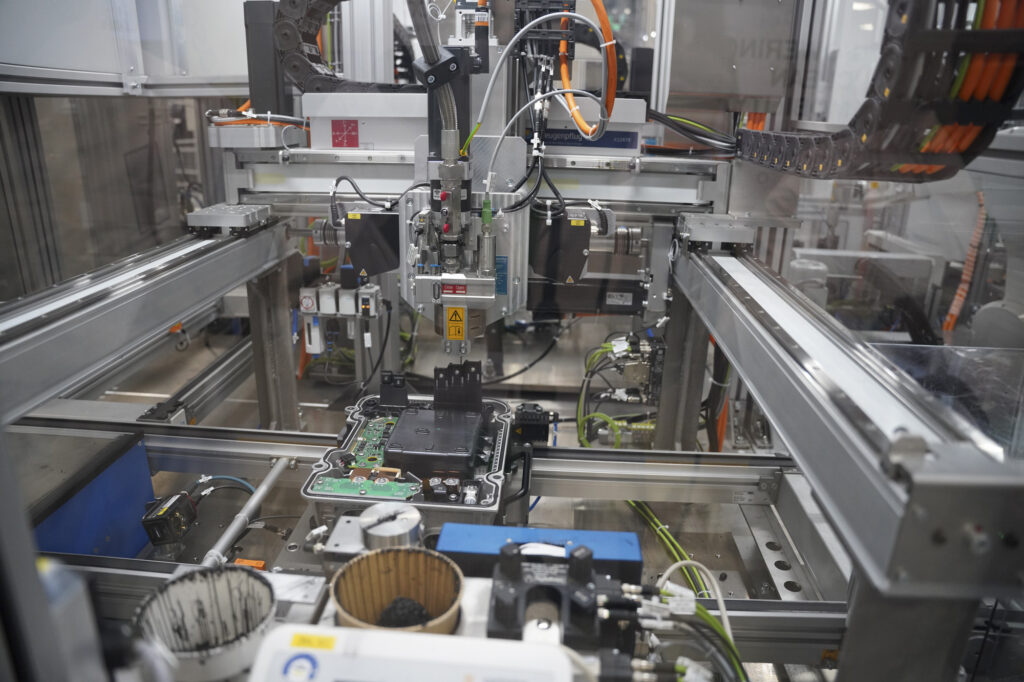
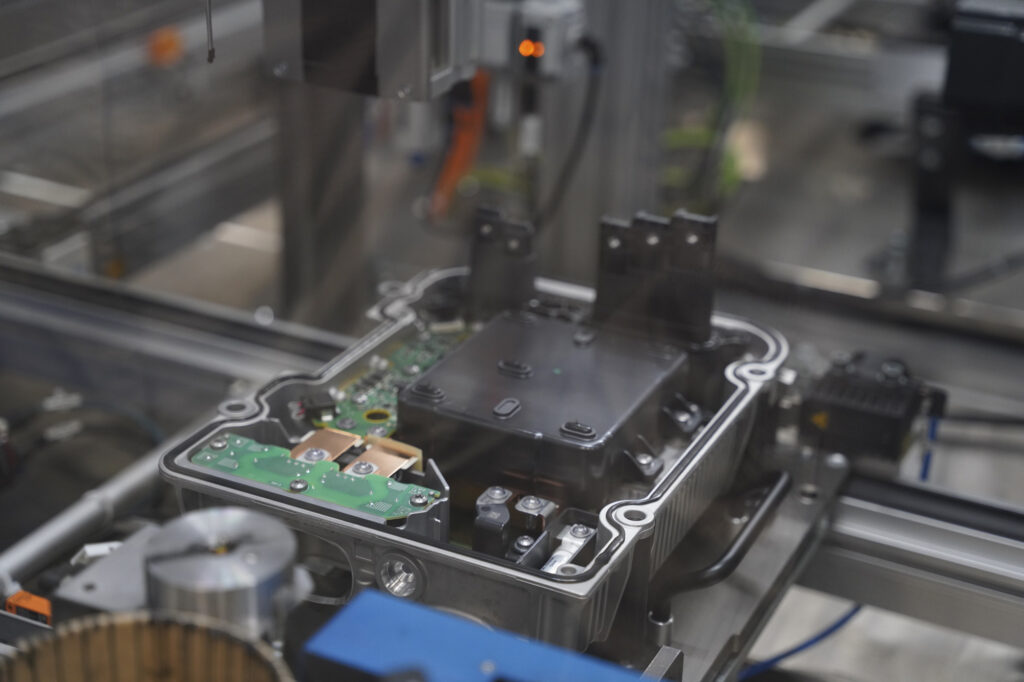
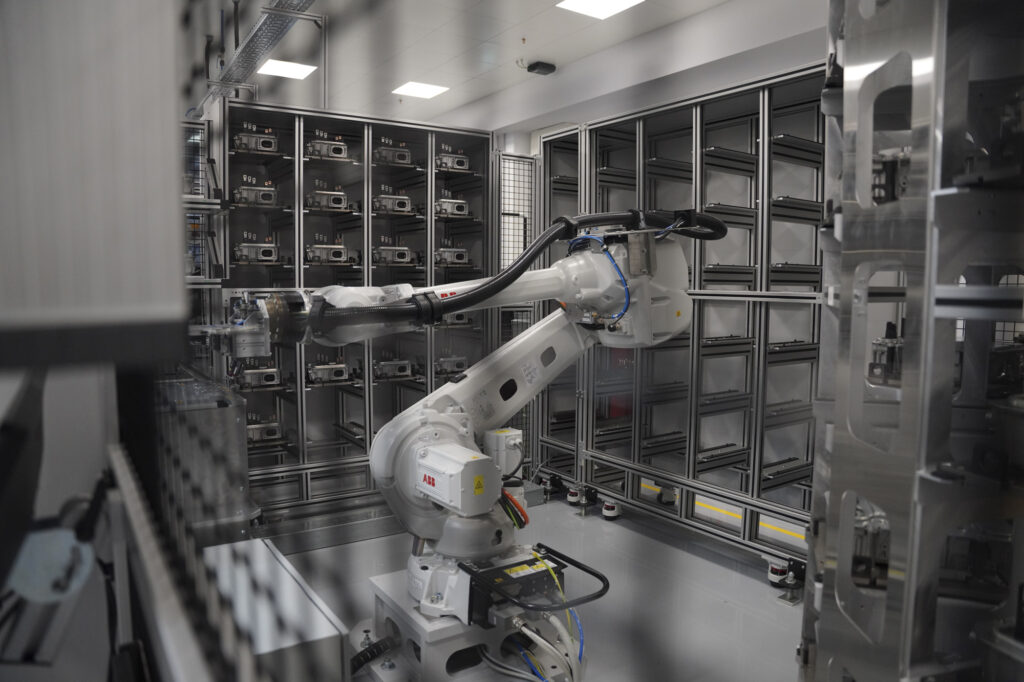
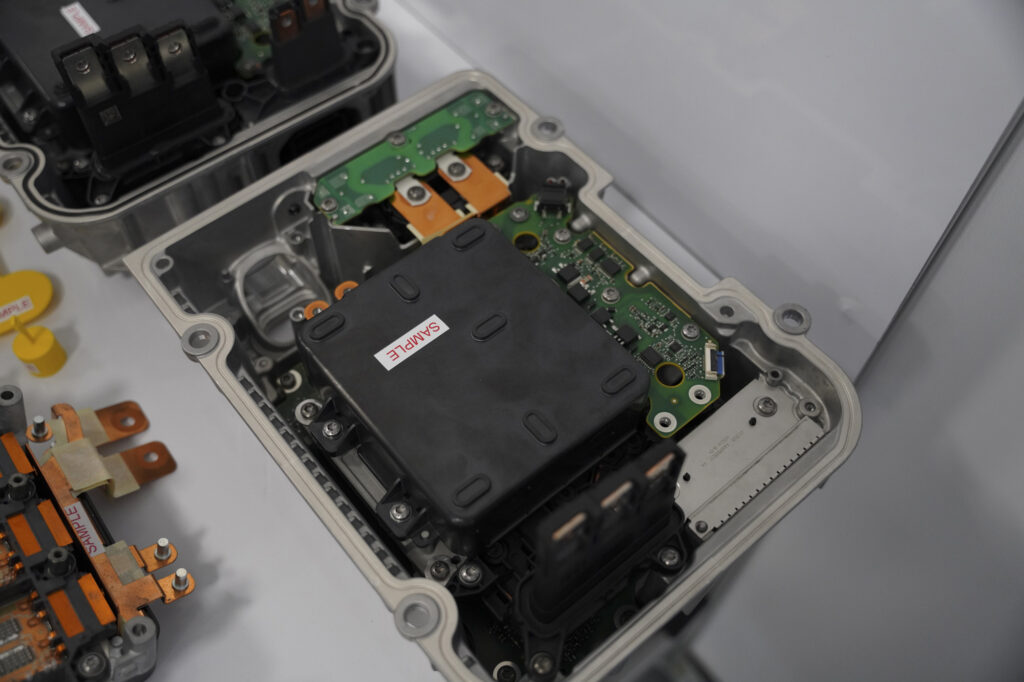
As you probably realize, the visit to Schaeffler’s two production facilities in Brasov helped us to better understand the company’s future plans and the direction in which the automotive industry in Romania and beyond is heading, so now it’s time to rest before the first really long day of EUROCHARGE, when we cross the border into Hungary.
In the meantime, I’ll leave you with the impressions of my fellow drivers behind the wheel of eight electric cars.
Dan Scarlat(Top Gear Romania) on Audi Q6 e-tron
The Audi Q6 e-tron is an all-new, all-electric SUV in the German automaker’s lineup, based on an 800V technical platform called PPE (Premium Platform Electric), developed in collaboration with Porsche and also used by the new Macan. Advantages include excellent charging speed, if you’re lucky enough to have a capable station: up to 270 kW, or 10-80% in 21 minutes, according to Audi. We haven’t tested this yet, but we’ll have plenty of time in the coming days at #EUROCHARGE by Schaeffler. On the first day of the test, one with relatively low temperatures for this period (about 6 degrees in mountainous areas), we arrived in Brasov with a consumption of 22.6 kWh, which would translate into a real autonomy of over 420 kilometers.
In front of the driver is a powerful steering wheel that’s beveled up and down, as well as a massive, curved dashboard that includes two screens: an 11.9-inch instrument cluster and a 14.5-inch infotainment system. I’m so old that I remember the days when I wanted a 14-inch monitor for my “desktop” at home, and new cars had at most a monochrome screen the size of a current smartwatch. And that’s not all: the passenger can have his or her own 10.9-inch screen, with Active Privacy Mode so that whatever they’re doing doesn’t distract the driver. The infotainment system is modern and very fluid, but as is always the case, it will be ‘covered’ by Apple CarPlay or Android Auto in everyday life. There’s plenty of touch controls, including on the steering wheel (where Volkswagen has dispensed with them), as well as a classic rotary audio volume knob on the center console: everything you need to remind you of the analog world we’re leaving behind.
Our test features the quattro version with all-wheel drive, two engines and a maximum output of 388 hp. How does it drive? Exactly as you’d expect: relaxed, quiet, with permanent reserves of power, but no harsh reactions. The suspension is very well balanced and the steering is almost sporty, although it’s not the kind of car you want to race on twisties. One more important detail: the new Q6 is the first car in the VAG group with a true ‘one pedal’ mode, which you can access by moving the transmission selector to the ‘B’ position. When I say “true”, I mean that the car comes to a complete stop if you release the accelerator pedal, like electrics from BMW, Tesla, Volvo or Ford (at least the Mustang Mach-E), and not just slows down to 10 km/h, as in other models in the group. So if you pay attention and anticipate traffic, you can drive the car using just the accelerator pedal. I’m glad German engineers realized that for an electric car, this is the ideal solution.

Andrei Barbu(MotorVlogTV) on Ford Explorer EV
If you had told me a few years ago that Ford and Volkswagen were going to make a car together, I would have looked at the whole thing as a rumor that was hard to believe. But lo and behold, the electric car is disregarding tradition, and we have a Ford Explorer related by alliance to the VW ID.4.
But somehow, it feels like the Explorer retains its identity, primarily through design. Something to be appreciated. It’s an American car, at least an interesting one. On the outside. The interior is closer to the ID.4 than the exterior, and you’ll find common solutions and buttons.
Where Ford makes a separate note is in the area of the center screen and infotainment system, and to be honest, I’m still not sure which I like better. But in the Explorer, the integration seems more pleasing.
On the other hand, although we’re talking about a common platform, Ford has tightened the screws on the suspension and steering just enough to maintain a typical Ford behavior. That’s an extra dash of “sportiness” where interaction is noticeable. The car is pleasant, comfortable and balanced. Not too much, not too little, but enough that you don’t leave the test disappointed. Quite the opposite, in fact.
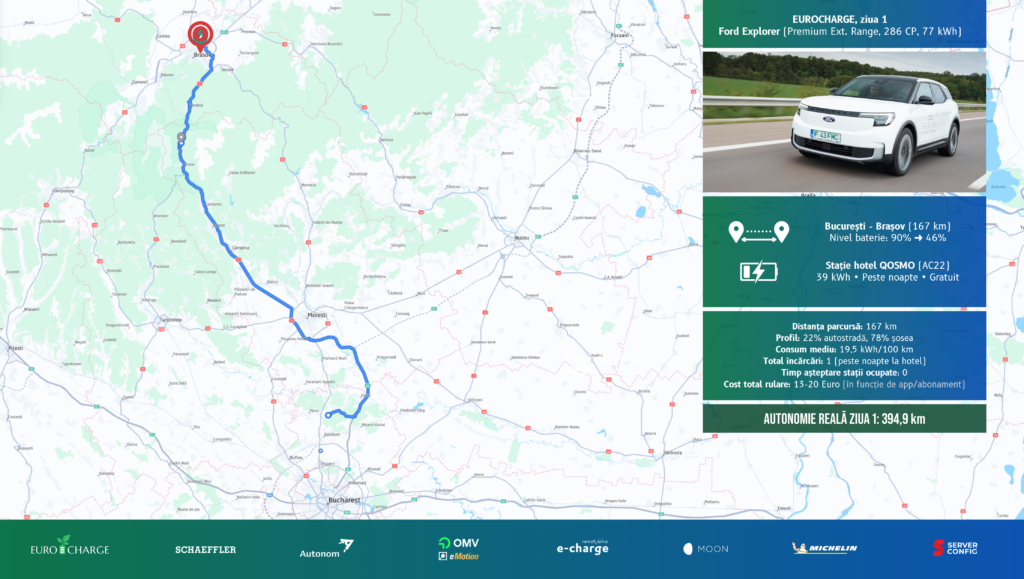
Tibi Buzdugan(Electromobilitate) about Hyundai Ioniq 6
After the resounding success of the Ioniq 5, with a design completely unlike anything the Korean brand had ever created before, Hyundai tried to appeal to sedan and coupe enthusiasts. The result is the Ioniq 6, a car with a silhouette that from some angles is reminiscent of the Stout Scarab (a sort of aerodynamic minivan from the 1930s) and from others of the Porsche 911, especially thanks to the curved roofline and high spoiler – though the similarities stop there.
Personally, I’m not a fan of this design. I prefer more the angular, retro-futuristic lines of its taller brother, the Ioniq 5. However, as an electric car, built from scratch on this platform, I thought the Ioniq 6 was very successful.
The model I drove has a 77 kWh battery and a single 229 hp motor on the rear axle. Unlike other front-wheel-drive electric cars, the power transmission is much more efficient and it was almost impossible to break grip in dry road conditions and efficiency-oriented tires (Michelin ePrimacy). I find rear-wheel drive sufficient for 99% of uses; perhaps only in snow would I miss all-wheel drive.
The elongated shape seems to cut down a bit on trunk space, but with the engine only in the back, the frunk is very generous and spares you accessories like a pan kit, AC cord, granny charger or first aid kit. Being on the same E-GMP platform as the Ioniq 5, interior space is excellent, and the 800V architecture allows for fast charging – perhaps faster than a bathroom break. Together with a comfort-oriented suspension, all this makes for a very pleasant and smooth driving experience, ideal for a true cruiser.
Radu Tudoroiu(Digital storyteller) on Hyundai Ioniq 6
The Hyundai Ioniq 6 is, without a doubt, the kind of car that doesn’t leave you indifferent. In anno Domini 2024, when many electrics have similar equipment, quality finishes and a reasonable range the impression is that an important differentiator remains personality. And the 6-le doesn’t lack personality at all.
Sharing a lot with its little brother, it’s the kind of car that you either like from the first second, as I did, or you laugh at it and say it would look exactly like an Apple wireless mouse if it were white. Some might argue that it has a Fiat Multipla vibe, love at first sight, or, well, the other way around.
With a ridiculously generous interior and absolutely respectable luggage space, plus a maximum range of 614 km thanks to the 800V architecture, there’s every chance that the Ioniq 6 ticks all the boxes for a family sedan that’s relatively affordable at the price but with similar performance and equipment to its notably more expensive competitors.
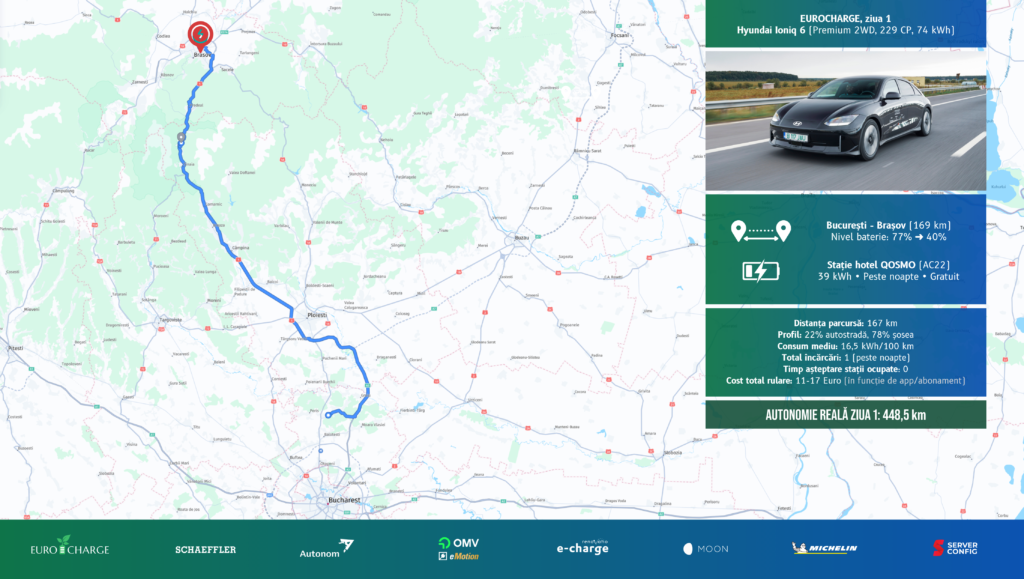
Bogdan Grigorescu(Autoexpert) about MG4
Because it’s good in life to do things in order, I set off on the EUROCHARGE adventure behind the wheel of the most affordable car in the group, the MG4. The base version with a 51 kWh battery starts at €28,900 (€23,900 through Rabla Plus), while my 77 kWh model costs €41,010 (€36,010 through Rabla Plus), because the whole range is discounted by €2,500. In short, it’s the cheapest car in the EUROCHARGE and, dare I say it, the most agile. The 245bhp at just 1826kg, the lightest weight in the group, combined with rear-wheel drive and a more heavily tuned multilink rear suspension, feels exhilarating in corners.
If you’re not interested in the sporty side of things, but you’re looking for autonomy, you should know that in Bucharest, when the temperature allowed me not to use the air conditioning system, it consumed 13 kWh/100 km, equivalent to a range of 572 km, but when air conditioning and extreme congestion entered the equation, consumption went up to 17 kWh/100 km (437 km). Between Snagov and Brasov (510 m positive difference in level, or, if you like, on a hill), with about 40 km of highway followed by the DN1, with the heating on in the passenger compartment, the consumption was 19.1 kWh/100 km, equivalent to a range of 389 km.
What did I like the most? The One Pedal system, which works flawlessly, bringing the car to a complete stop when the accelerator is released. Simply put, it’s addictive in city traffic. Then the two customizable buttons on the steering wheel. I’ve paired them with two vital functions for energy consumption: driving modes and energy regeneration level. Where else is there work to be done? On the multimedia system, which requires too many “button presses” to adjust climate settings when using Android Auto, which, by the way, is only activated via USB cable. Oh, and the brake pads and brake disks, which squeak extremely loudly at low speeds.

Adrian Mitrea(0-100.ro) about Porsche Taycan
The Porsche Taycan (facelift) reconfirms its status as the absolute leader for what technology means on electric cars. In #EUROCHARGE by Schaeffler we have so far tested very little of what this model can do. But essentially what I’ve taken away is this: it charges faster than ever (up to 320 kW), consumes less fuel (than before the facelift) and has, by implication, a longer range.
What I can say is that I made it from outside my house in Bucharest to Brasov using 50% of the battery. It was quite cold, with lows reaching 6 degrees Celsius in the mountains and highs barely above 18 degrees Celsius.
So far the numbers look promising for the Taycan and we have another 9,000 km to discover more about it and the other cars in EUROCHARGE.
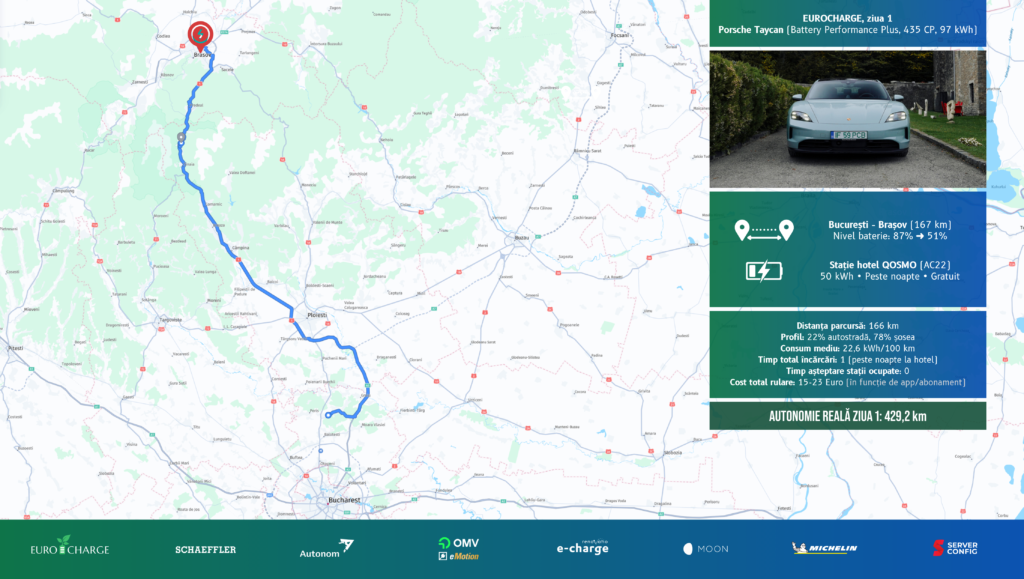
Adi Dima(eblogauto) about Renault Scenic
To drive the Renault Scenic E-Tech is to instantly understand why this car was Europe’s Car of the Year 2024. The headaches sometimes associated with running an electric car magically disappear when you climb aboard this model. Obviously, this technology costs money and the price of the French model is €52,000, which puts it in the cheaper half of the cars co-opted into EUROCHARGE 2024. I mention the price because it’s hard to have a battery with a net capacity of 87 kWh and a range of more than 500 km when you’re paying around €50,000.
I think the Scenic has one advantage over all the cars on this tour – the interior. Ergonomic, easy to use, roomy, offering a design that will still be fresh 5 years after buying the car. The bench seat is ideal for passengers of any height, and the infotainment system is easy to use, offering real functionality – the physical controls are still present, so using the climate control doesn’t require taking your attention off the road.
The Scenic E-Tech is the right family car for the modern user who can charge at home or at work, but also isn’t afraid to go out on the town in their new electric MPV. I know Renault would prefer me to call this car an SUV, but it seems to me that I would be insulting its practicality if I did.
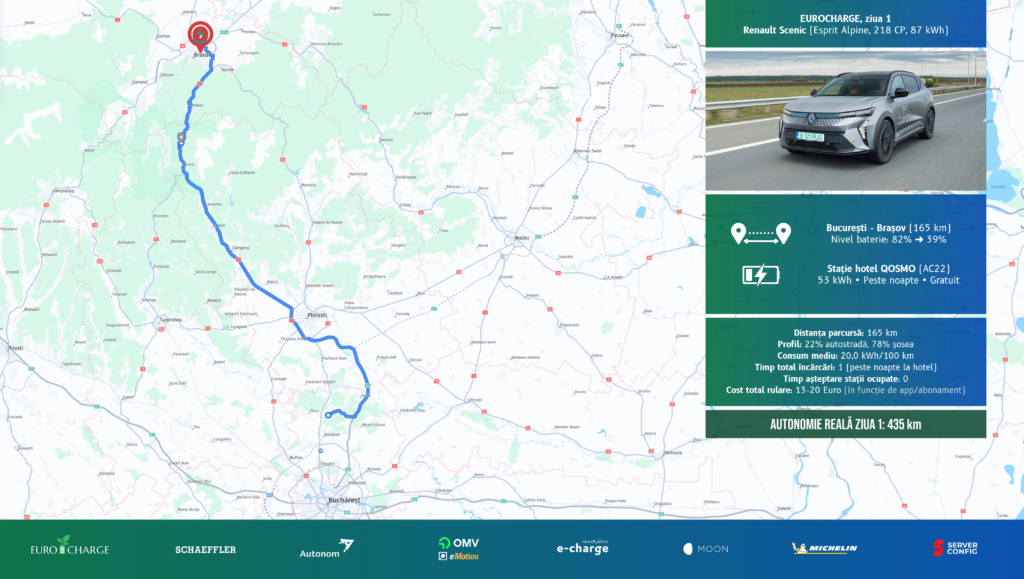
Constantin Ciobanu (AUTOCRITICA / Adevărul Auto) on Volkswagen ID.7
Taking the ID.4 as a benchmark, I can say that the ID.7 represents a significant leap forward for VW. First of all I report that I came across a car that was extremely coherent and homogeneous in its overall message. Hats off to the suspension set-up, as this detail is one of the major challenges of any electric.
An excellent filtering suspension, very good comfort and decent volume control. And again pleasantly impressed by the audio feedback you get from the suspension and drivetrain, you don’t get that feeling of mechanical torture caused by the natural mass of an electric. Here we’re talking 2,120 kilograms.
Impressed with space, quality of materials and assembly. Small ergonomic incongruities – here I would point to the limitation of operating the front side windows or selecting the rear ones and then operating them.
Dynamically we found a peaceful car that wants to travel relaxed with its occupants.
For a verdict on the range, I’m waiting for the first serious mileage stage, after the 166 I’ve run so far I can’t say I’ve built up a clear picture.
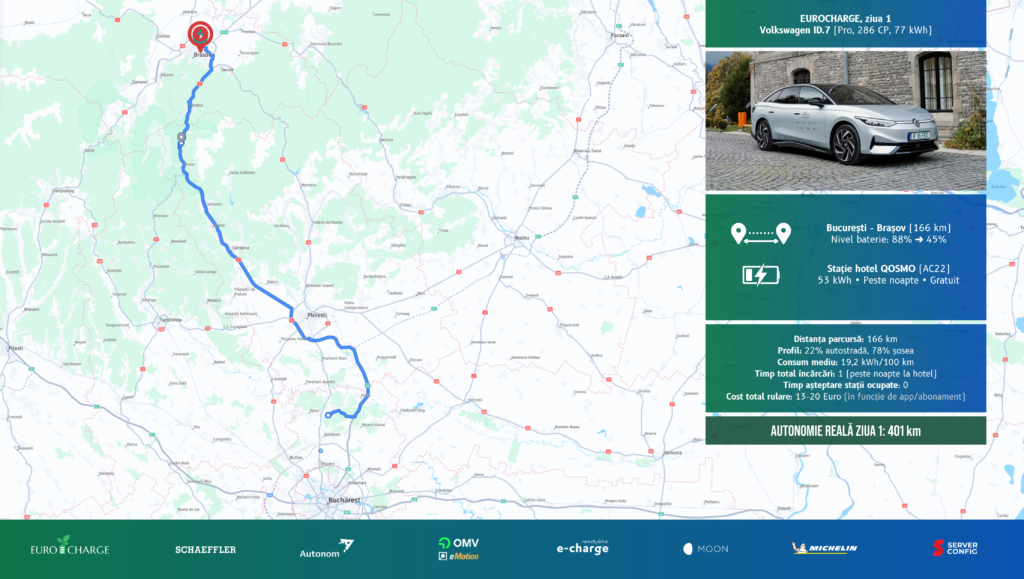
Berti Panaiot (AUTOCRITICA, Urban Adventures) on Volvo EX40
I haven’t even blinked twice, summer’s already over. I thought it was May and we were driving the Volvo EX30 through Greece. I’d driven around town in an electric car before, but this was the first road trip in my life where I didn’t pass a gas station at all.
Now it’s time for another epic adventure. It’s about 9,000 kilometers from Bucharest to Lisbon and back. And, of course, still in an electric car. And still with Volvo, only this time with its big brother, the Volvo EX40 in its longest range version.
If you don’t know what the Volvo EX40 is all about, know that the original model name was the Volvo XC40 Recharge Pure Electric. A name as long as a member of the Swedish royal family.
But as the Swedes are famous for loving things simple and efficient, with the expansion of the electric model family, the XC40 became the EX40 and that was that. And I can already tell you one thing I liked right off the bat, compared to the model I drove to Greece: the bigger trunk compared to the EX30.
I don’t have to tell you what it’s like to leave home for 16 days, but keep in mind that I packed some summer clothes, some more fall-winter clothes, plus a bunch of other things needed on such a road trip. But in short, all the luggage fit in the trunk.
As this is not my first experience with an electric car, I didn’t bother to charge it before leaving, so I left Bucharest with the battery at 80%. Of course, the fact that I only drove as far as Brasov made a difference, but you know that as you make a few trips with such a car, all the fears you think you have disappear one by one.
And that’s exactly what I’ll be telling you about during these 16 days of EUROCHARGE with the Volvo EX40.
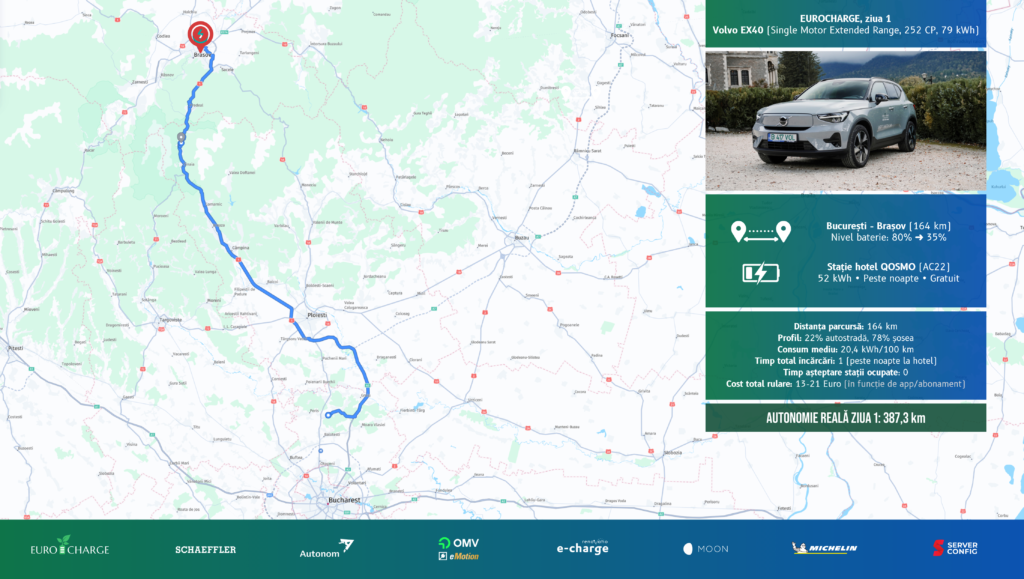
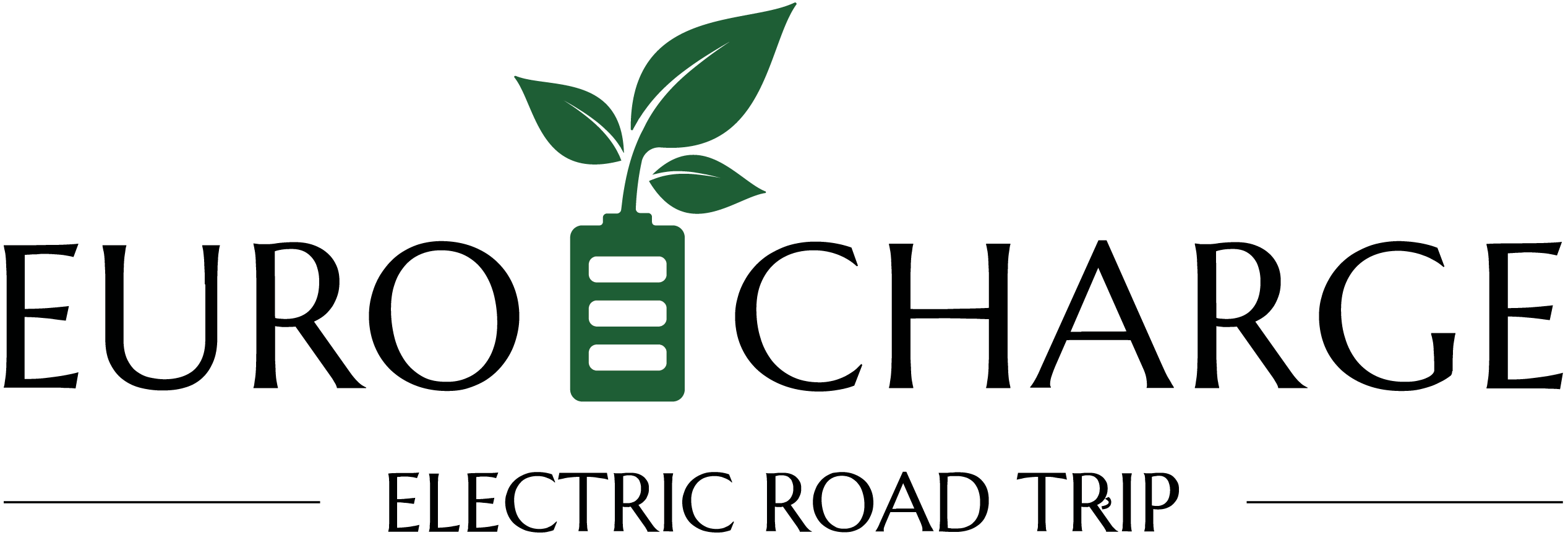
is a project backed by SCHAEFFLER
Charged by
OMV eMotion and Renovatio e-charge
Green Partner
Autonom
Charging stations
MOON România
On the road with
Michelin
Powered by
Server Config

